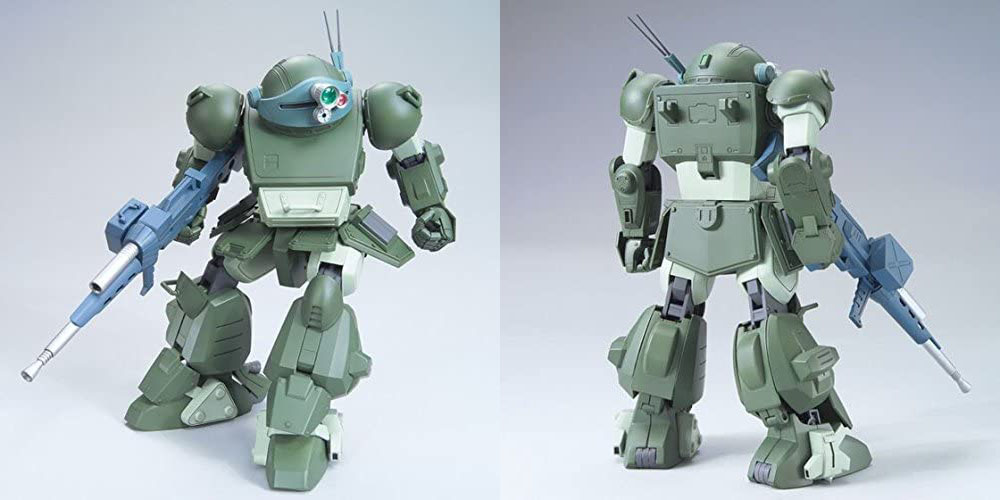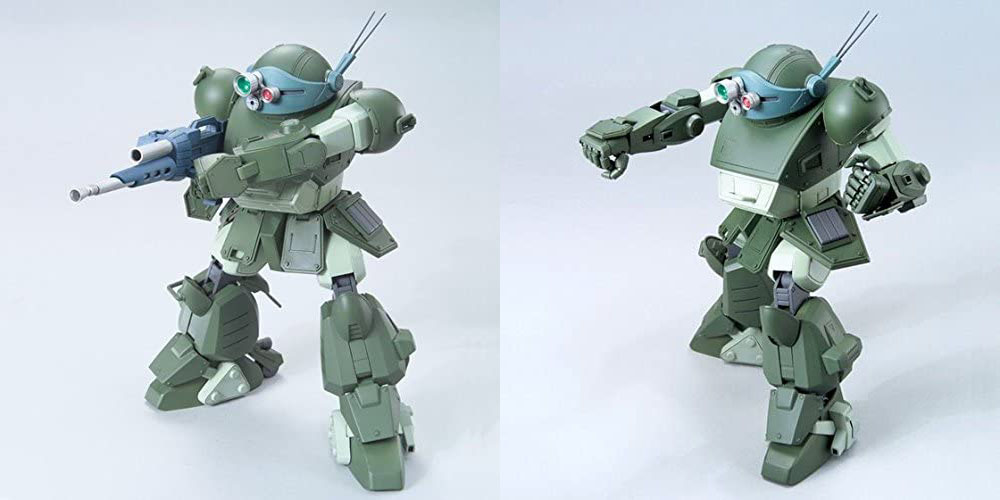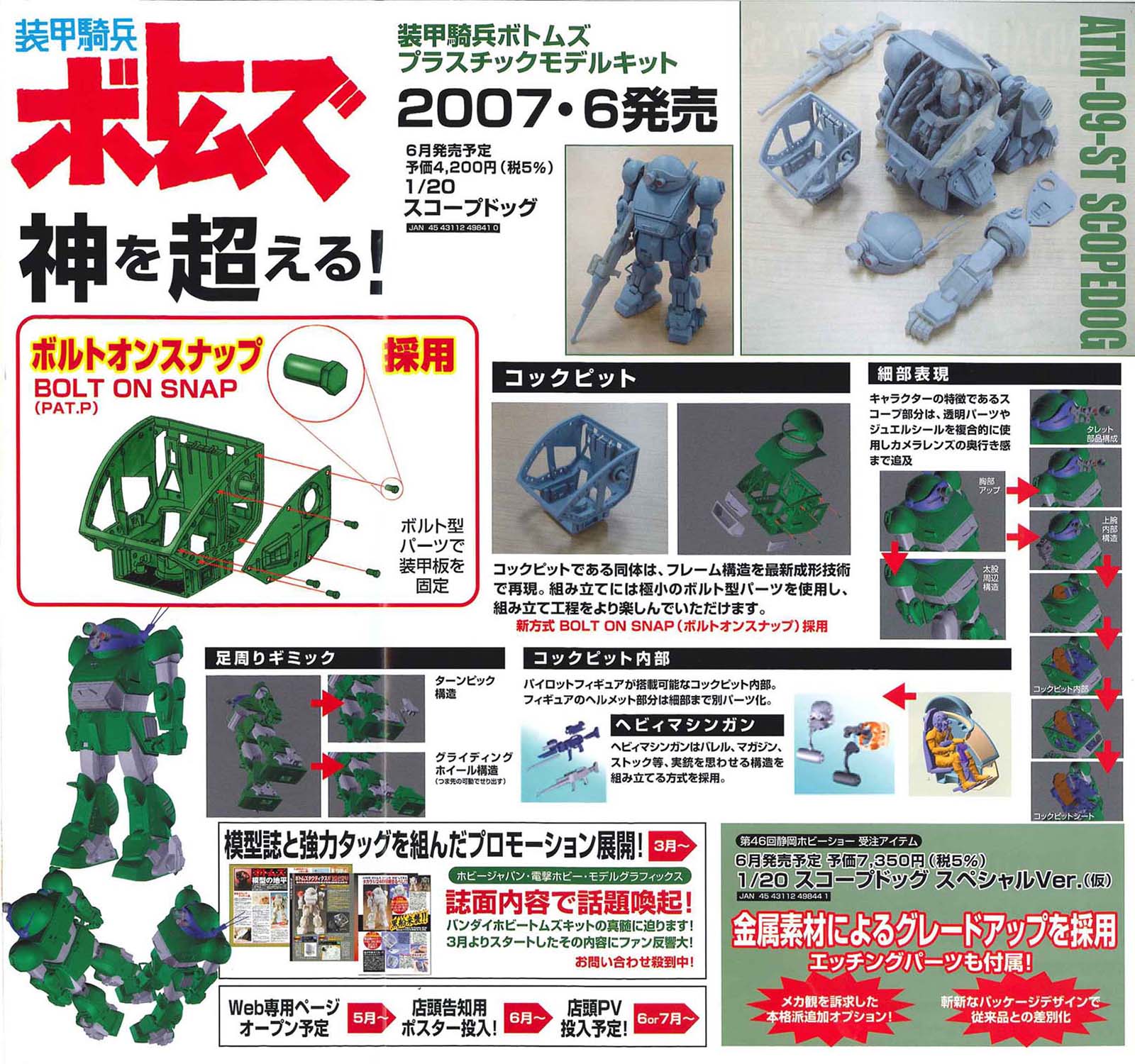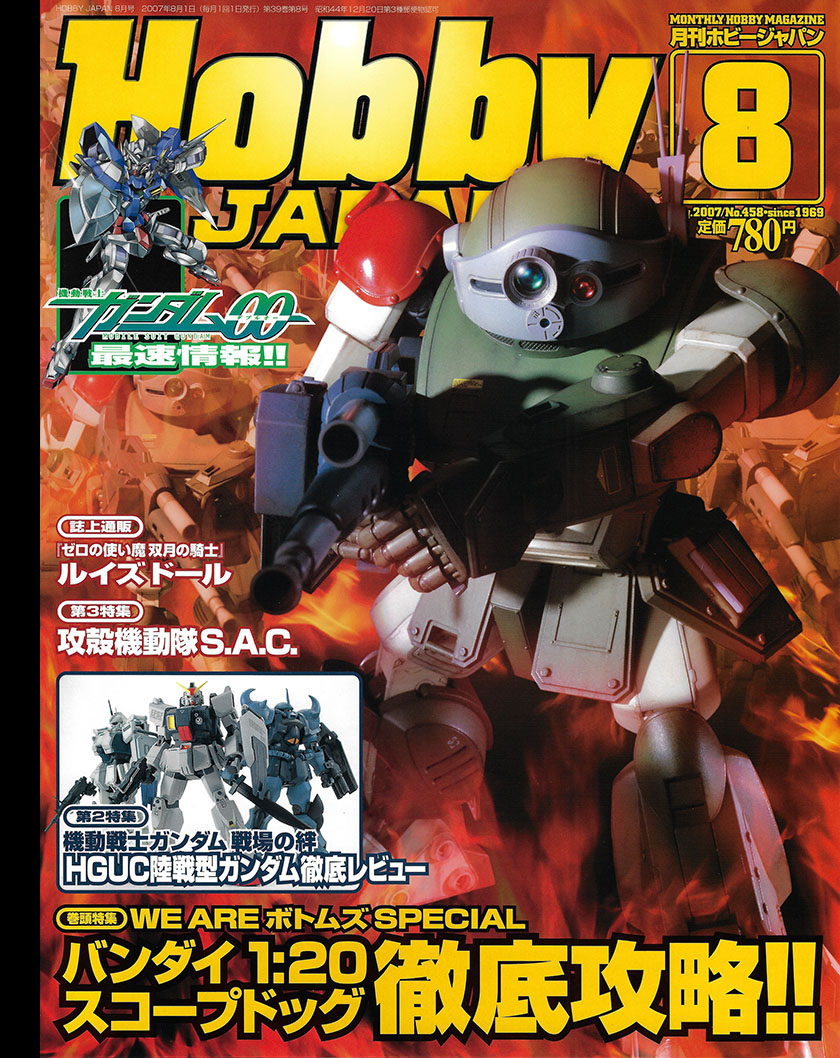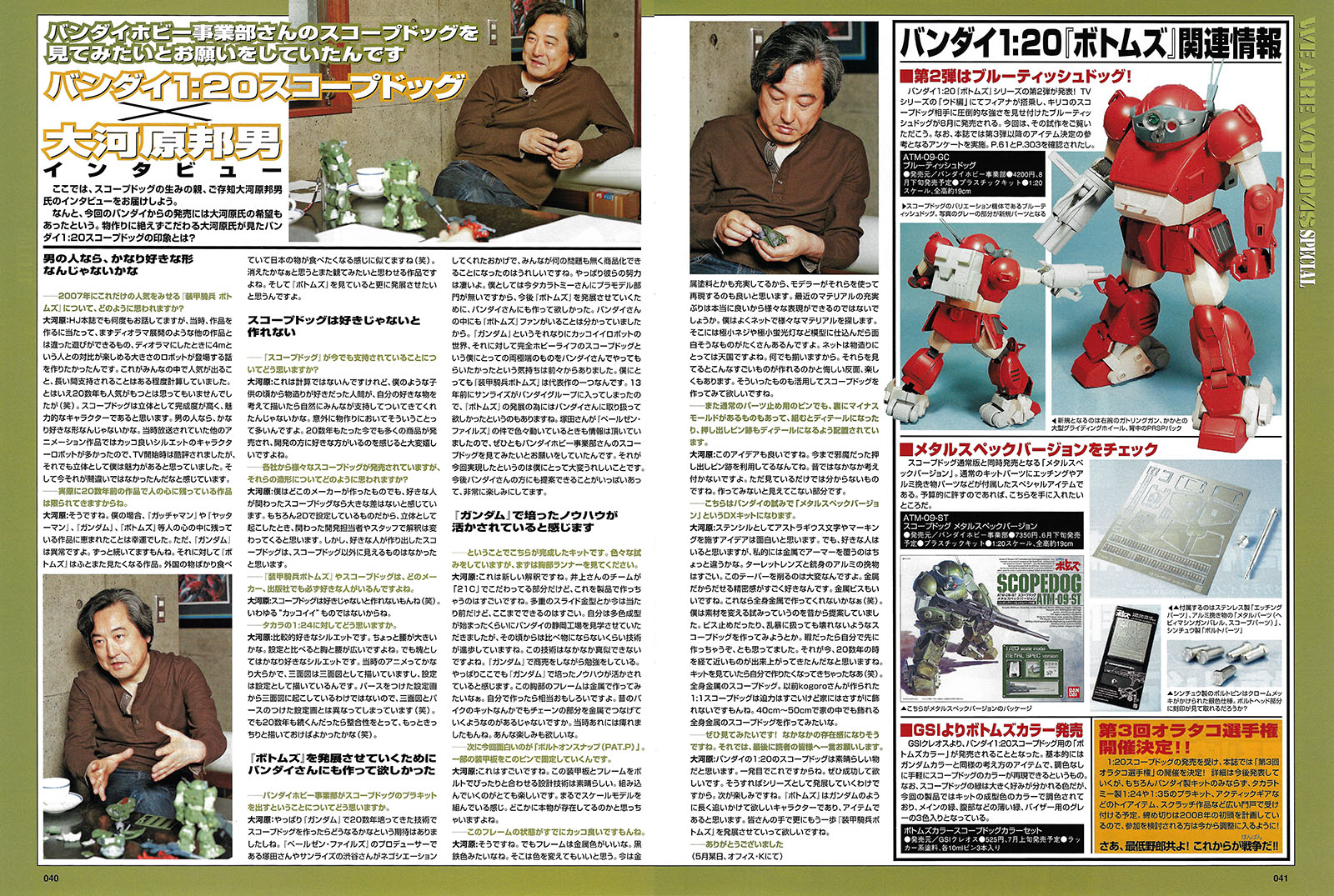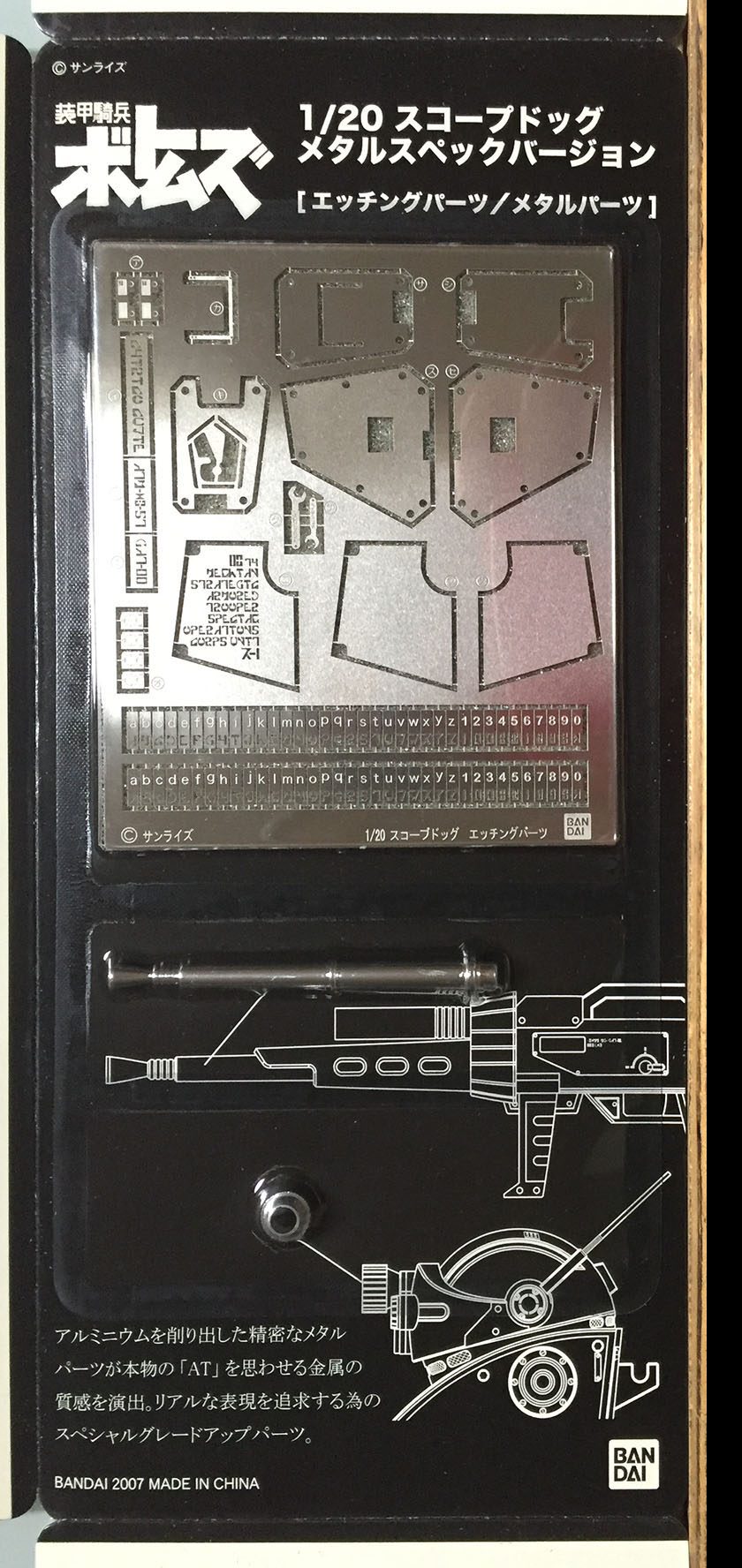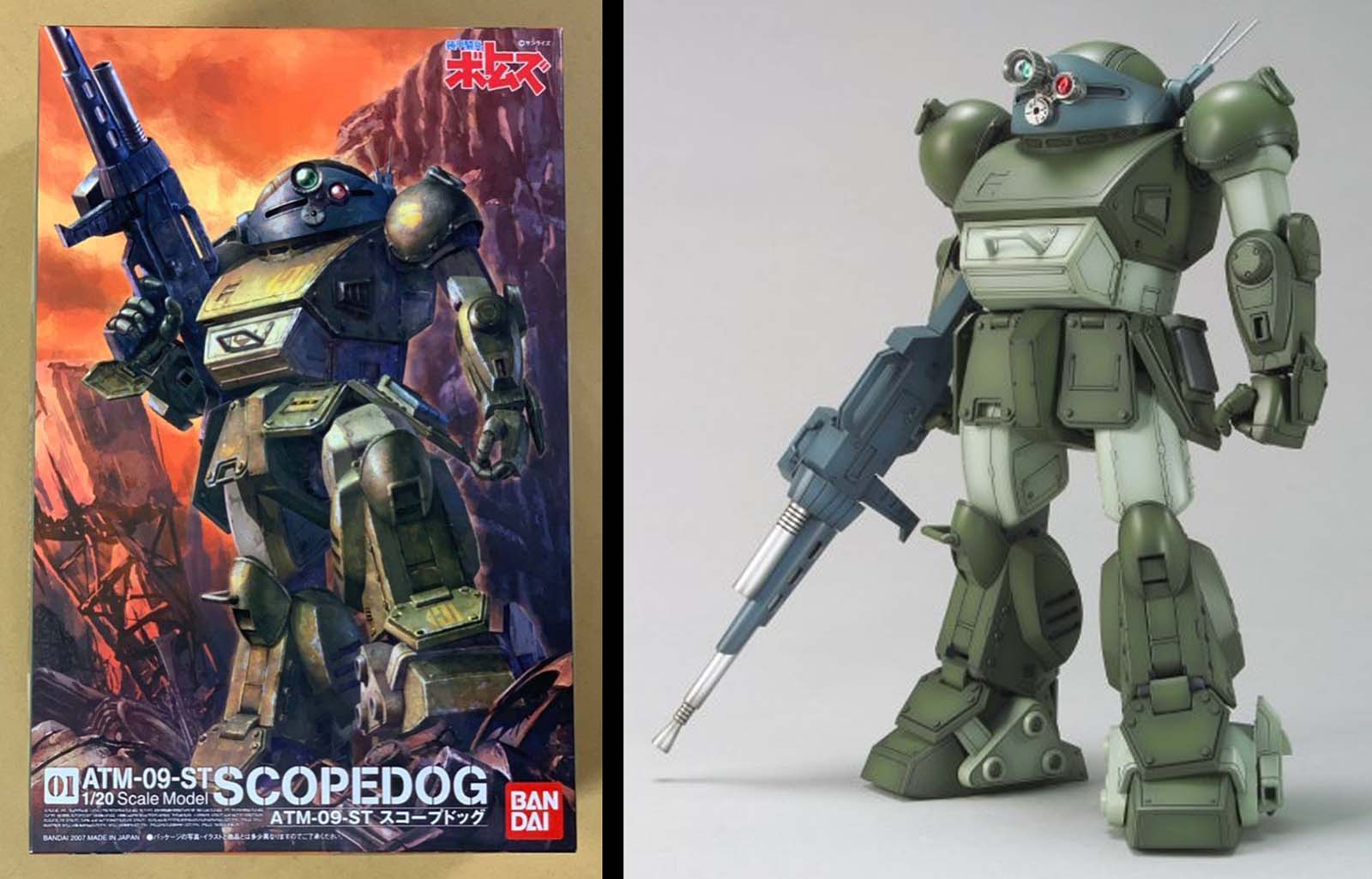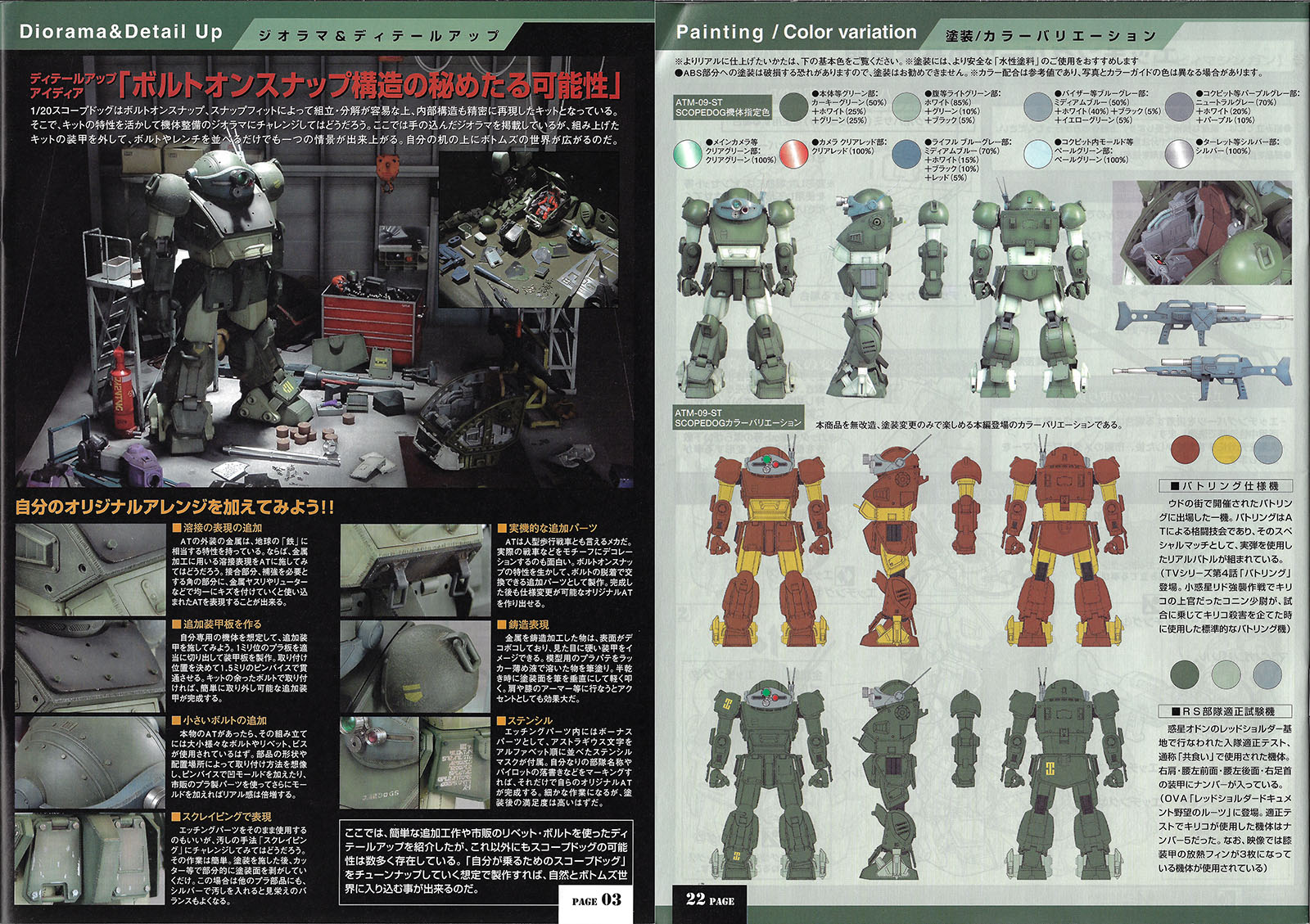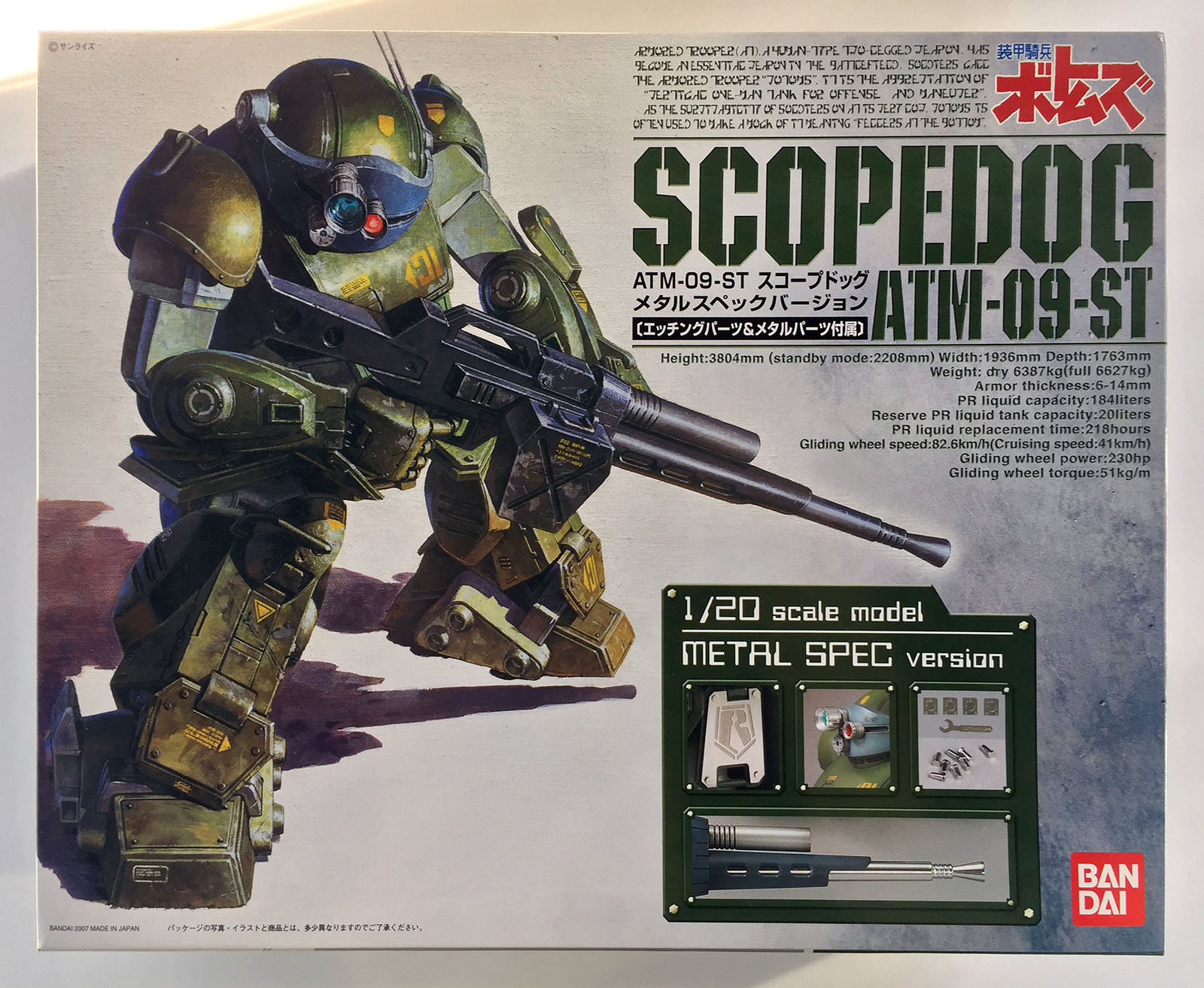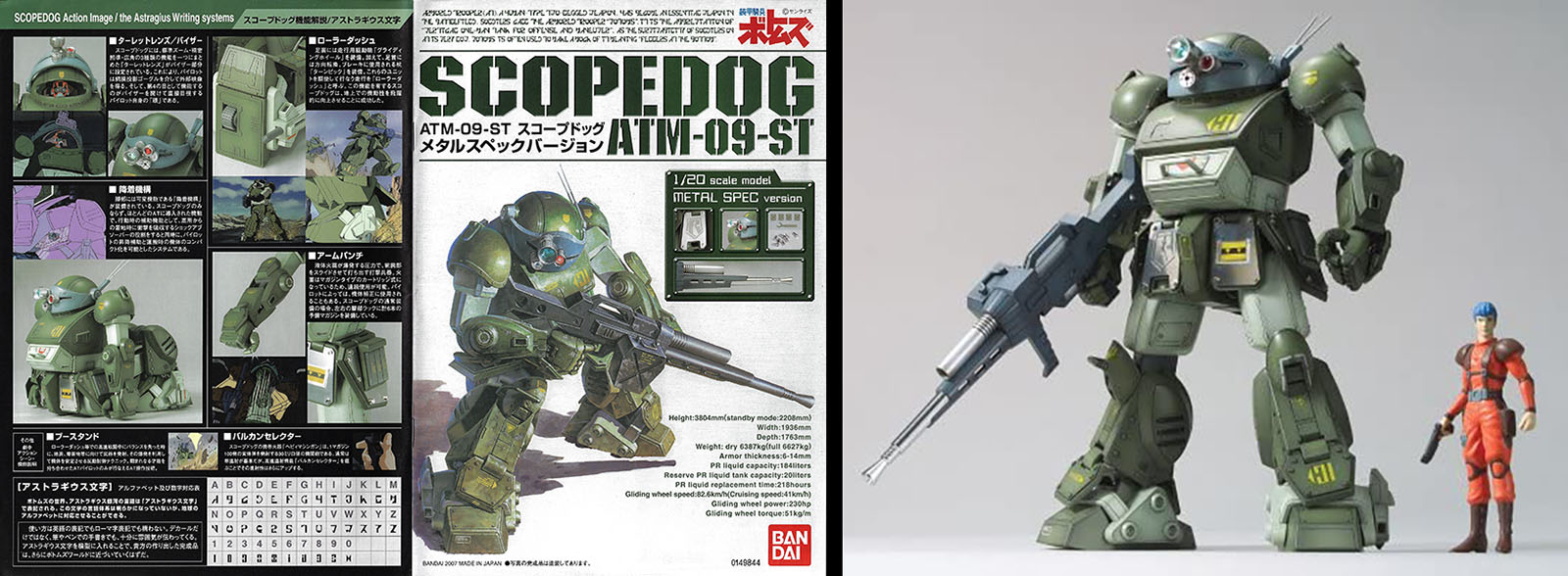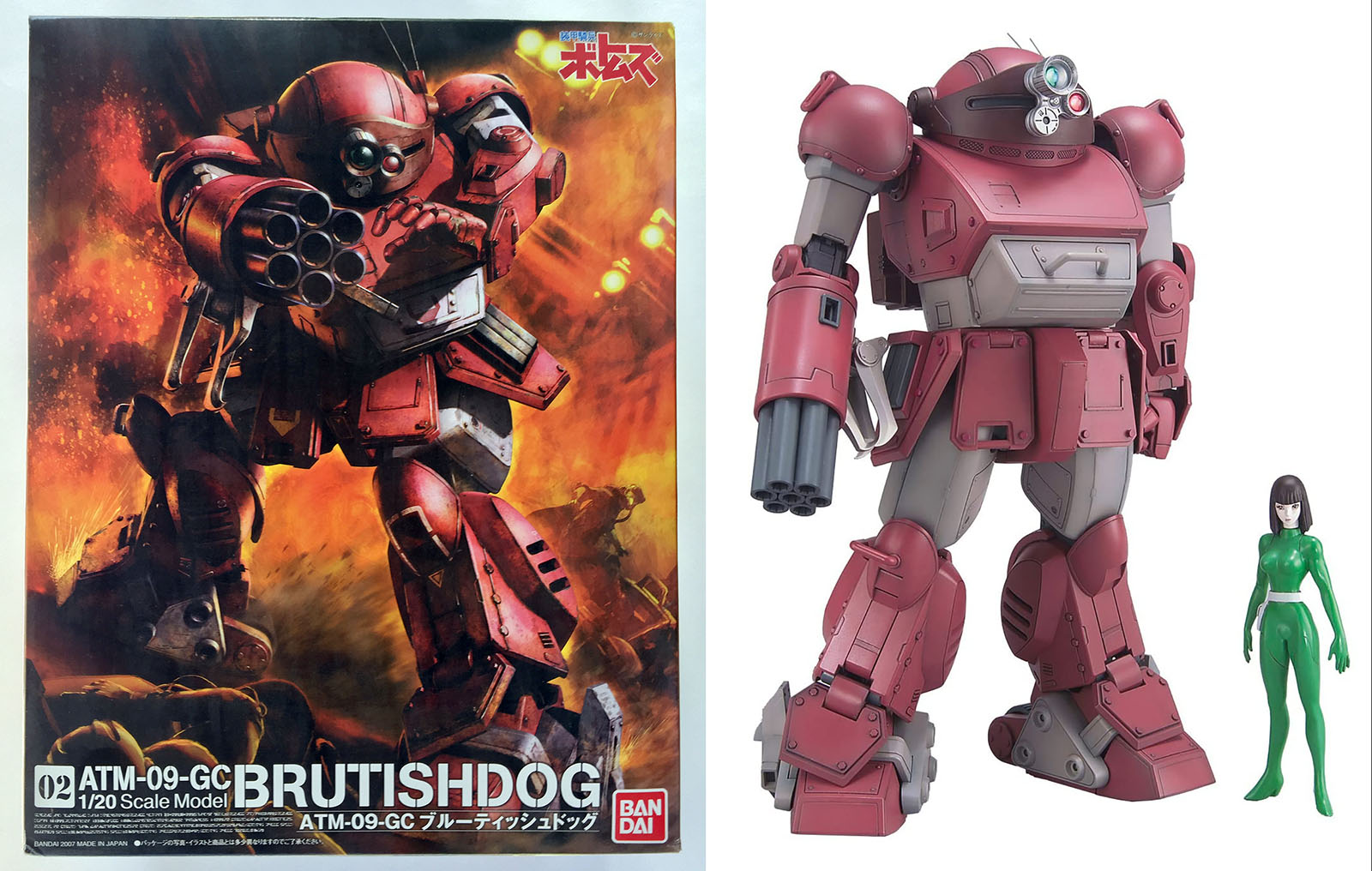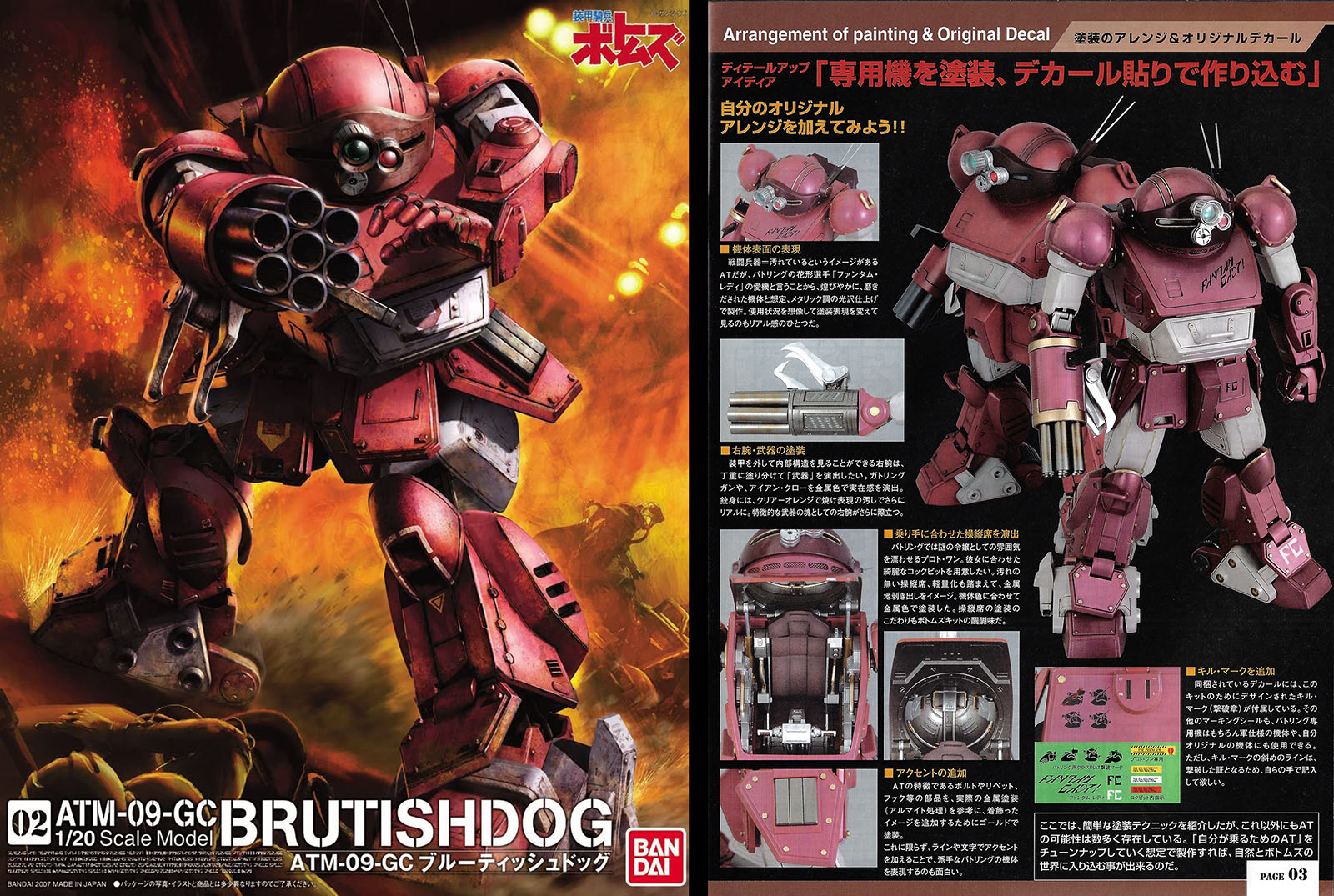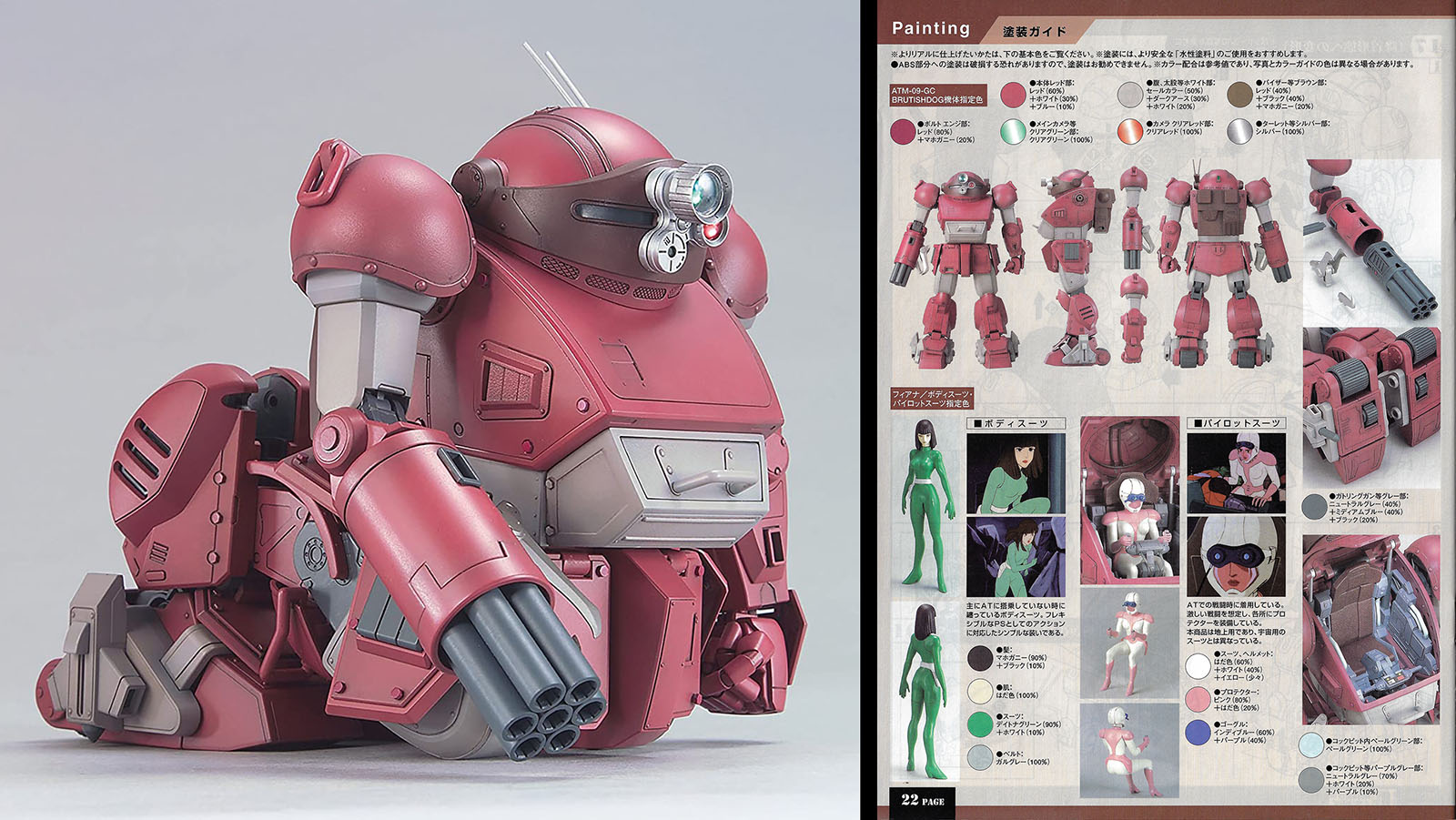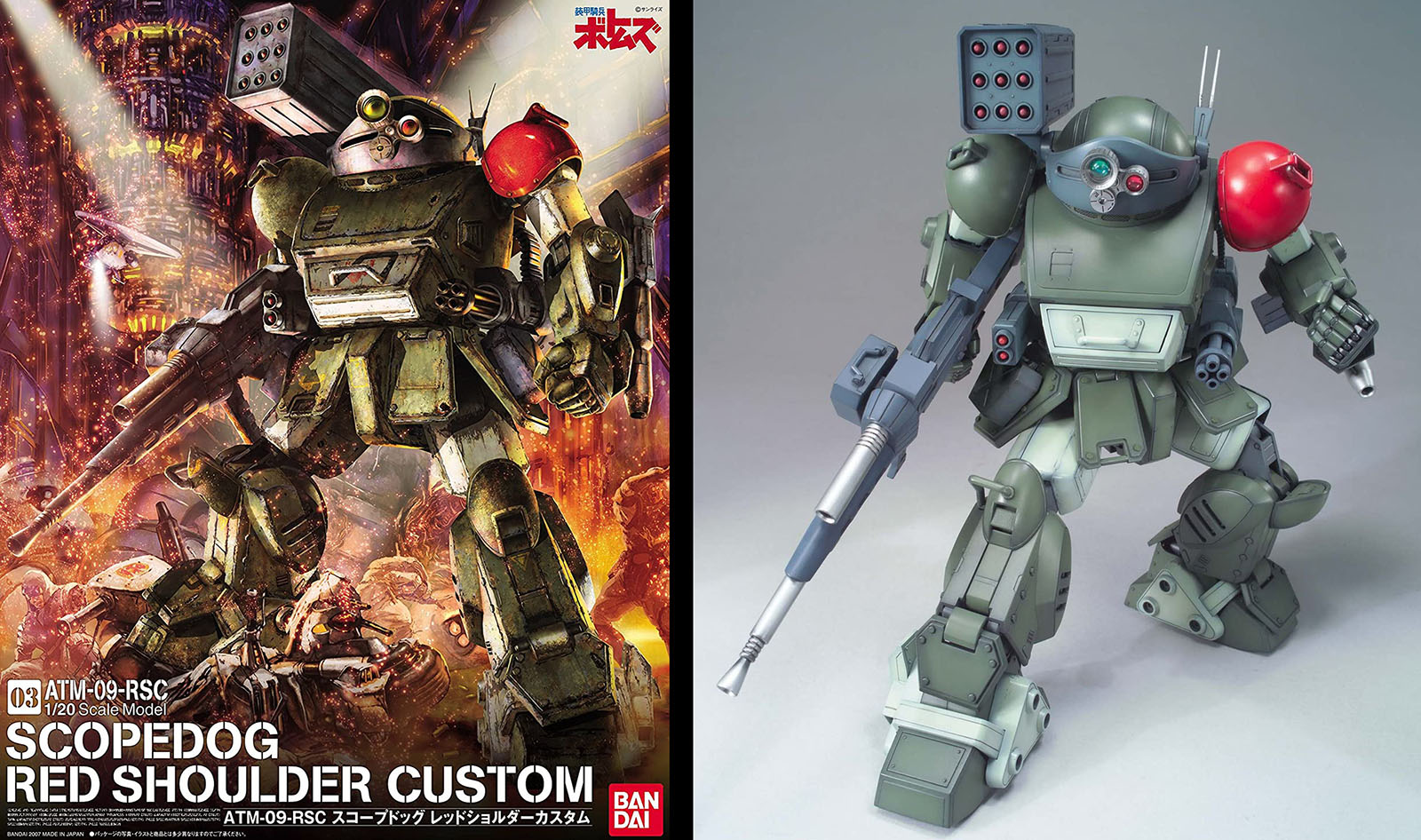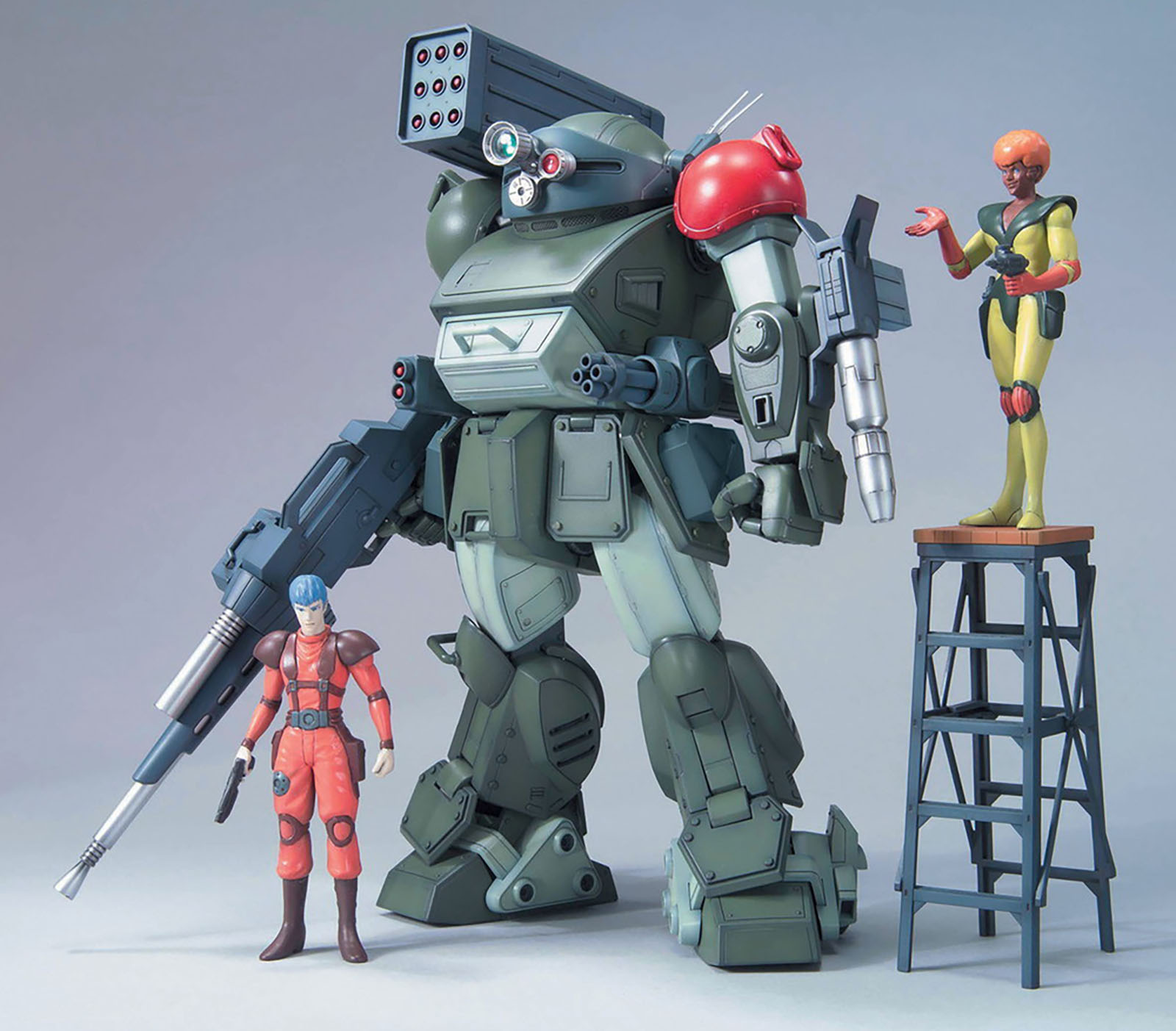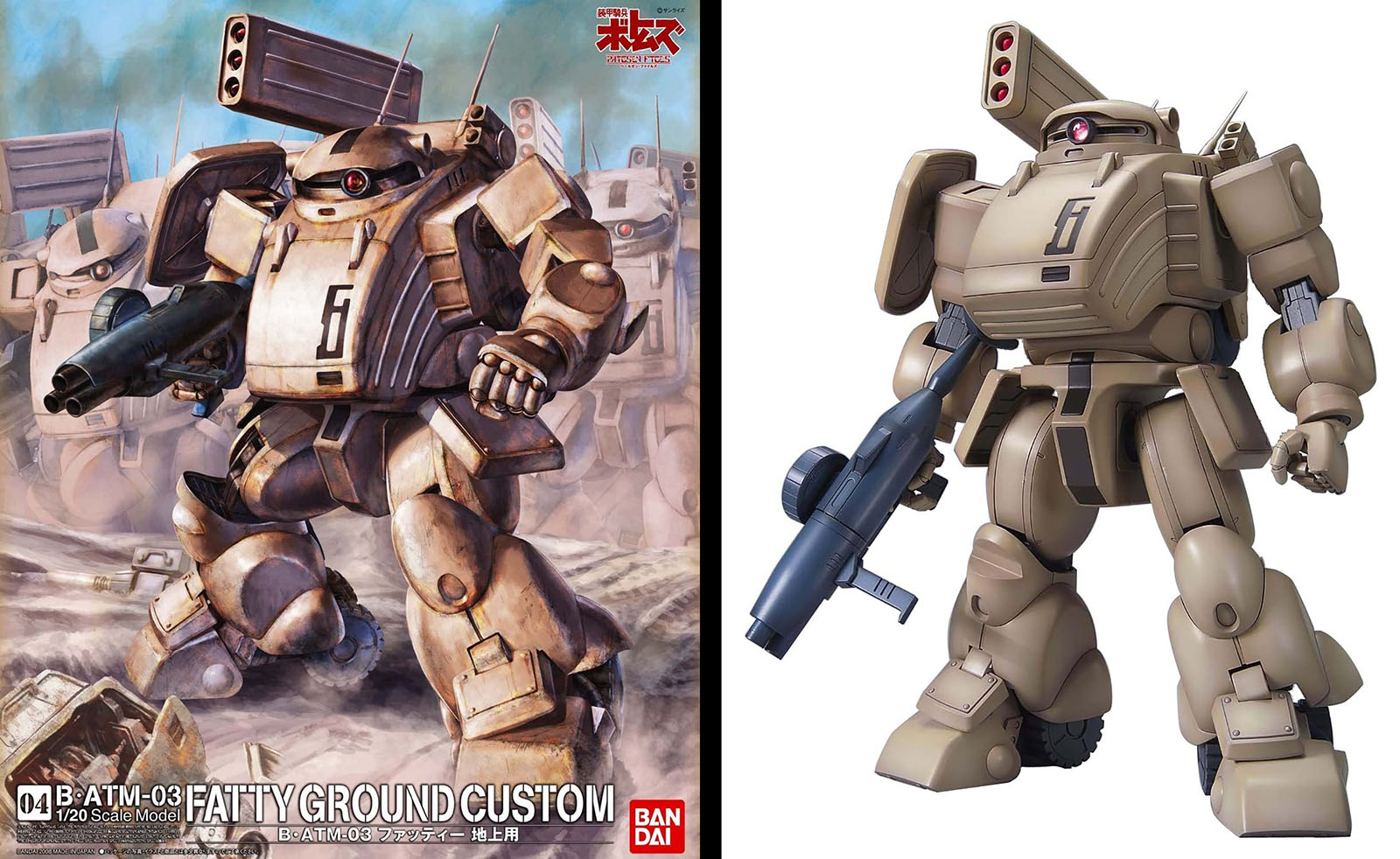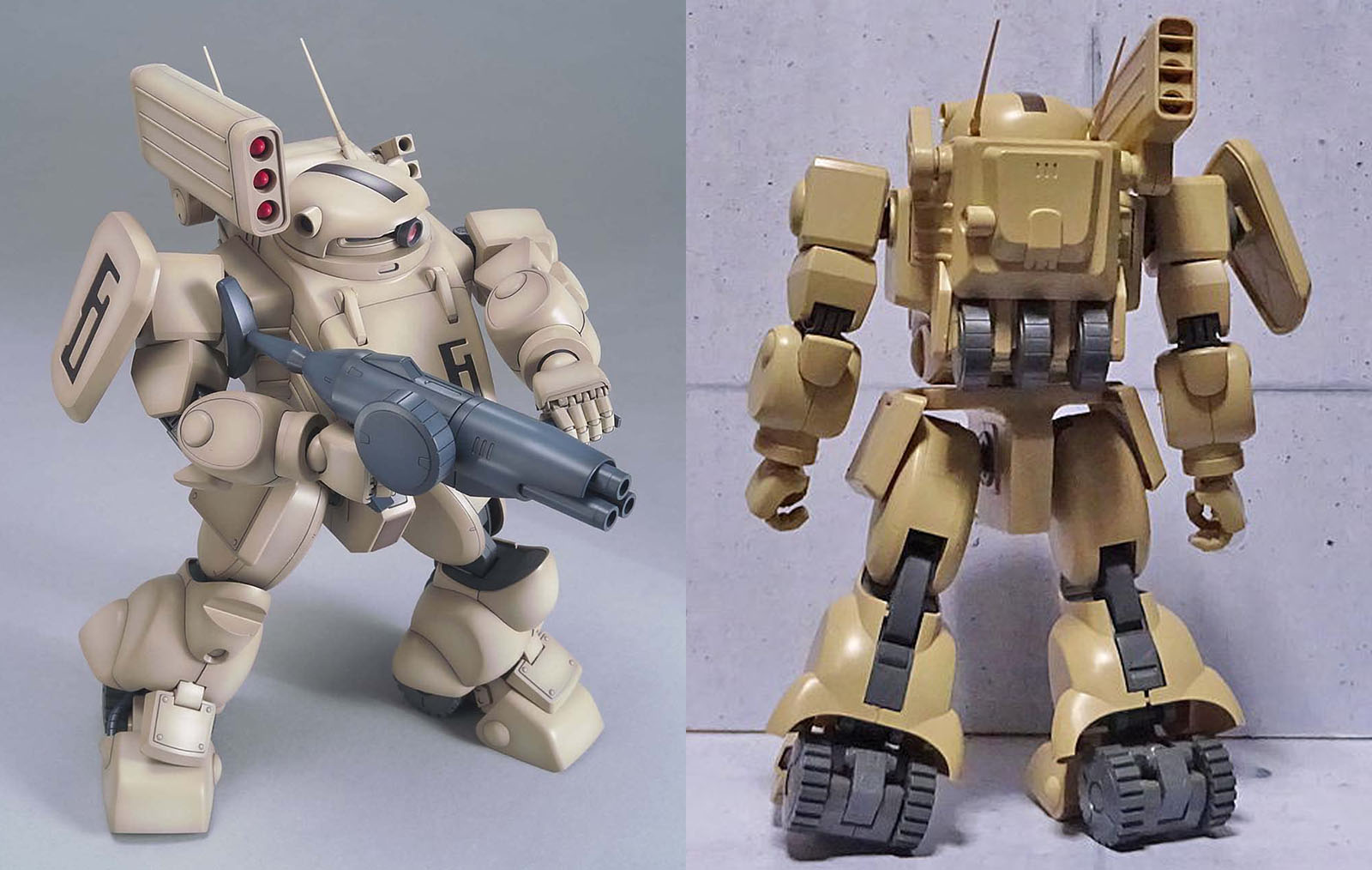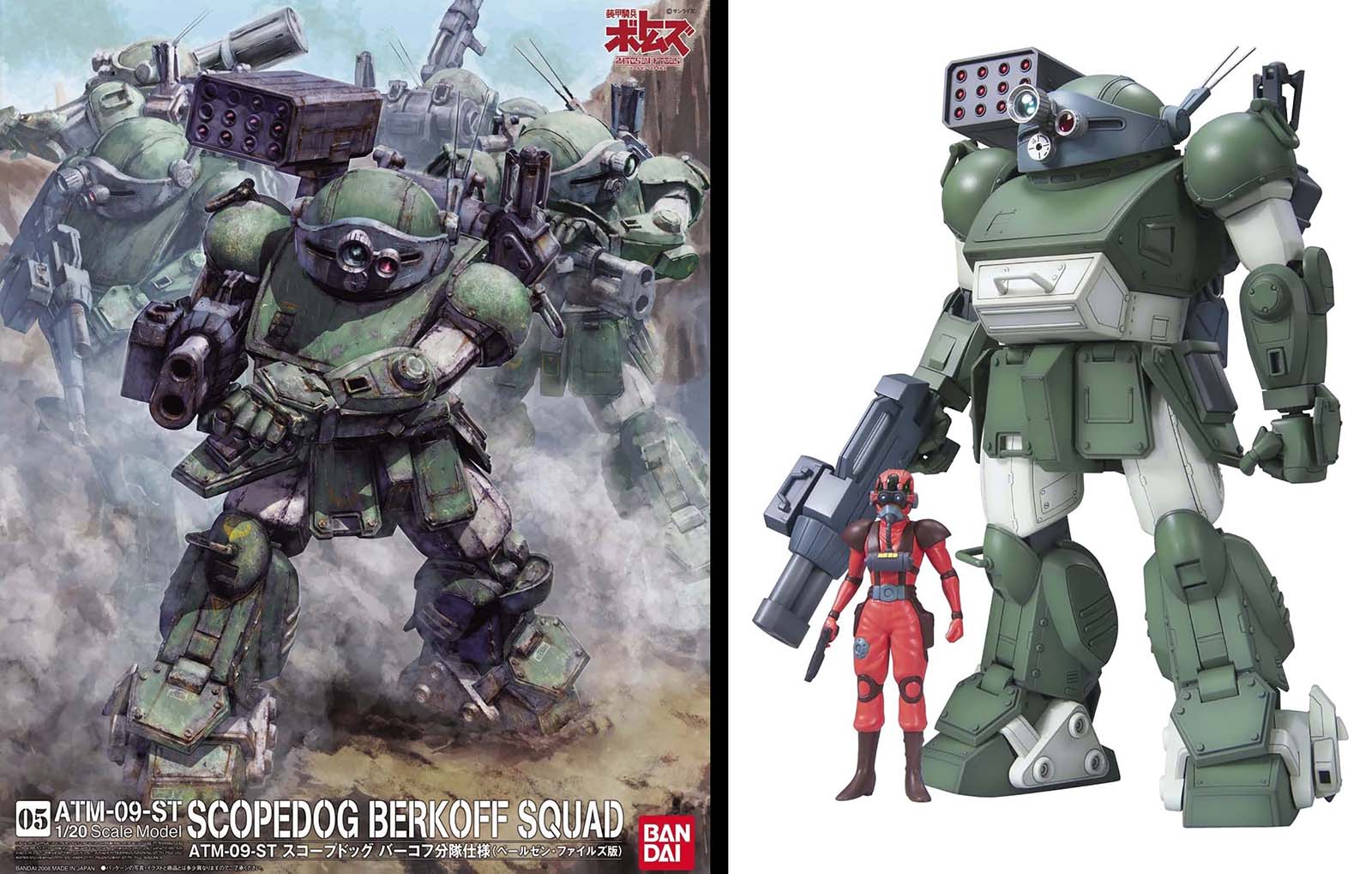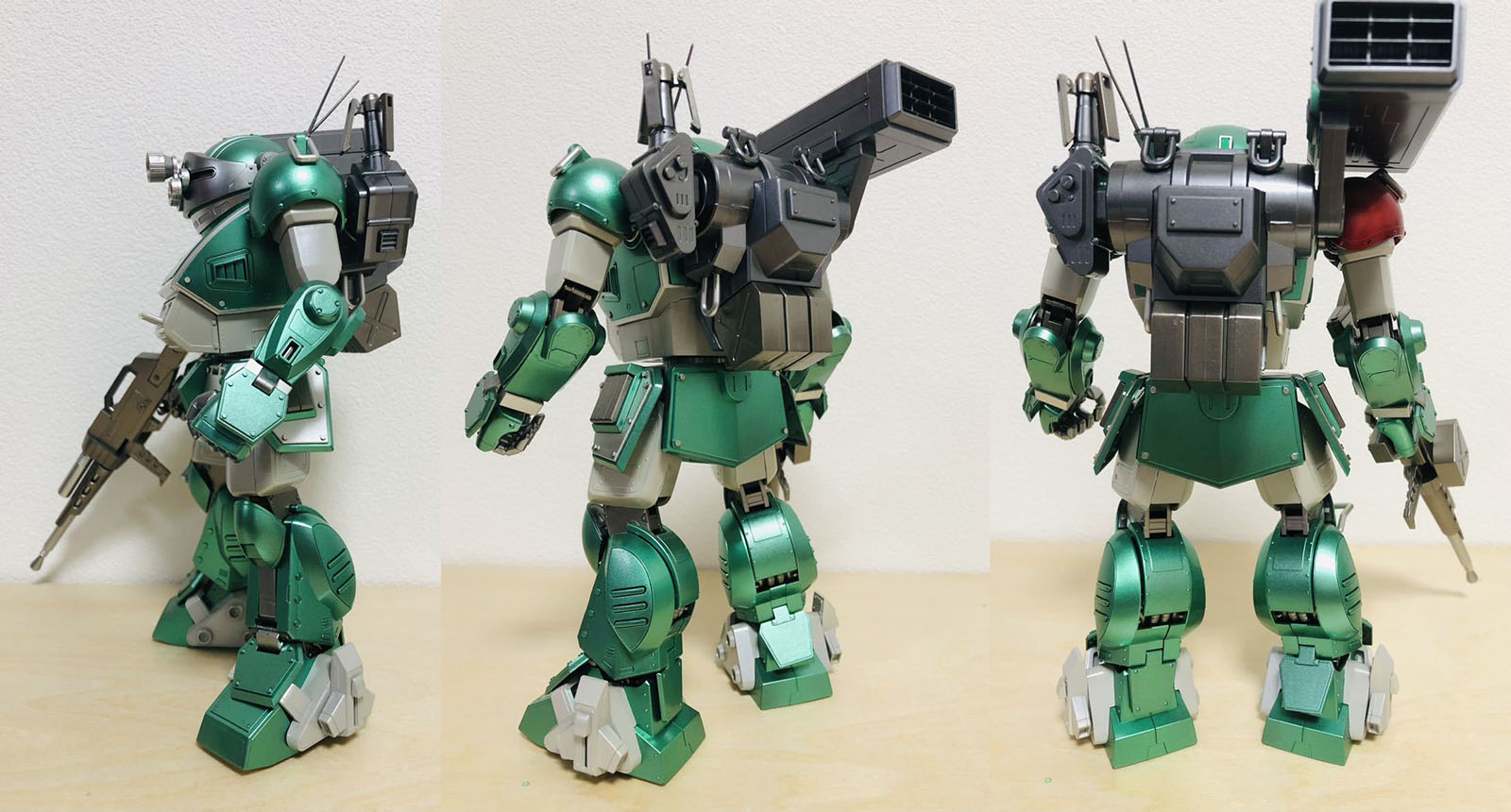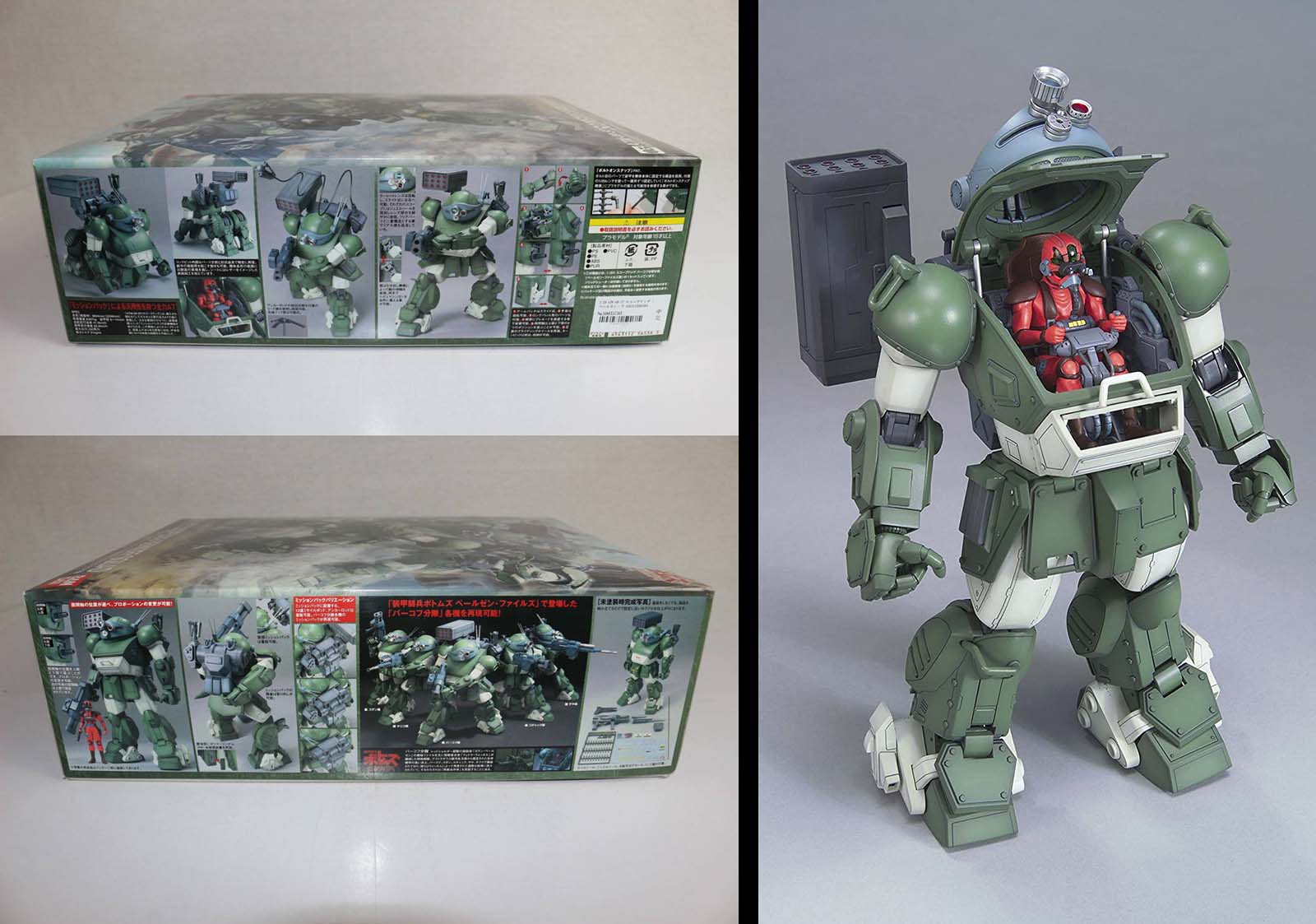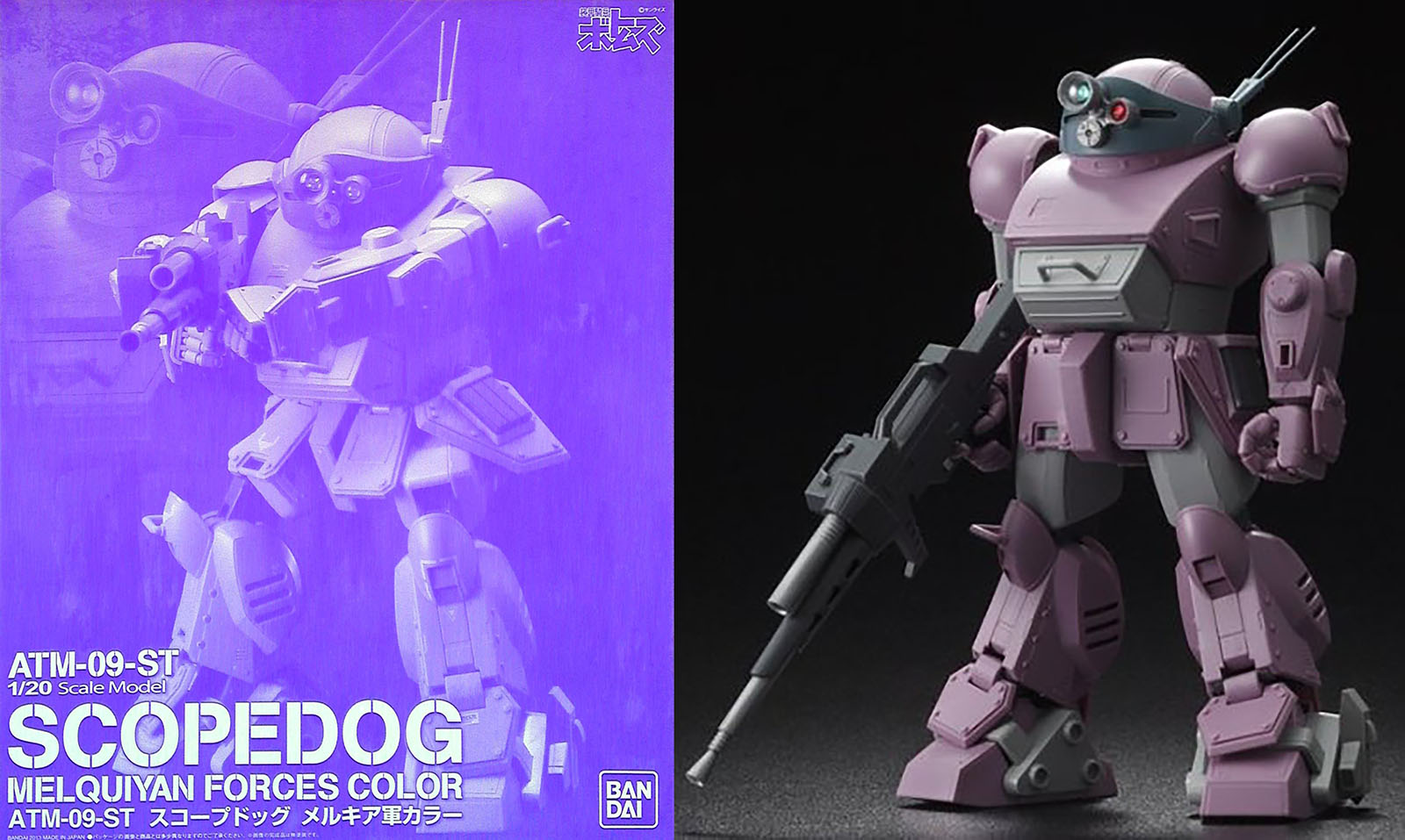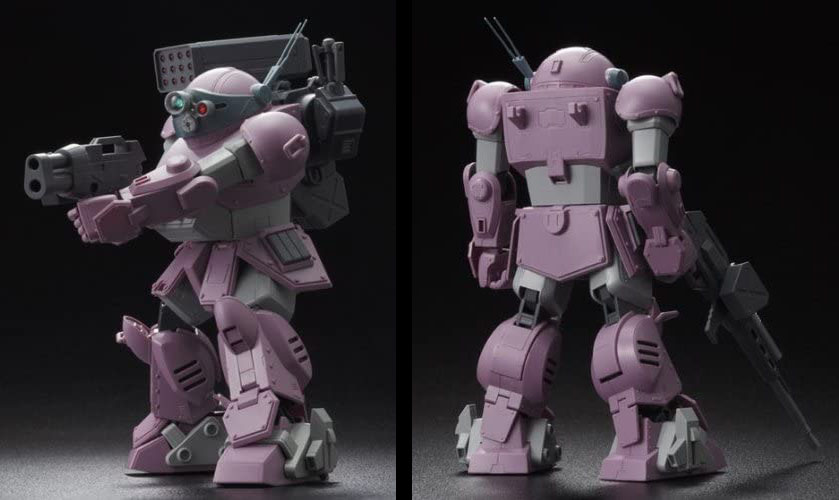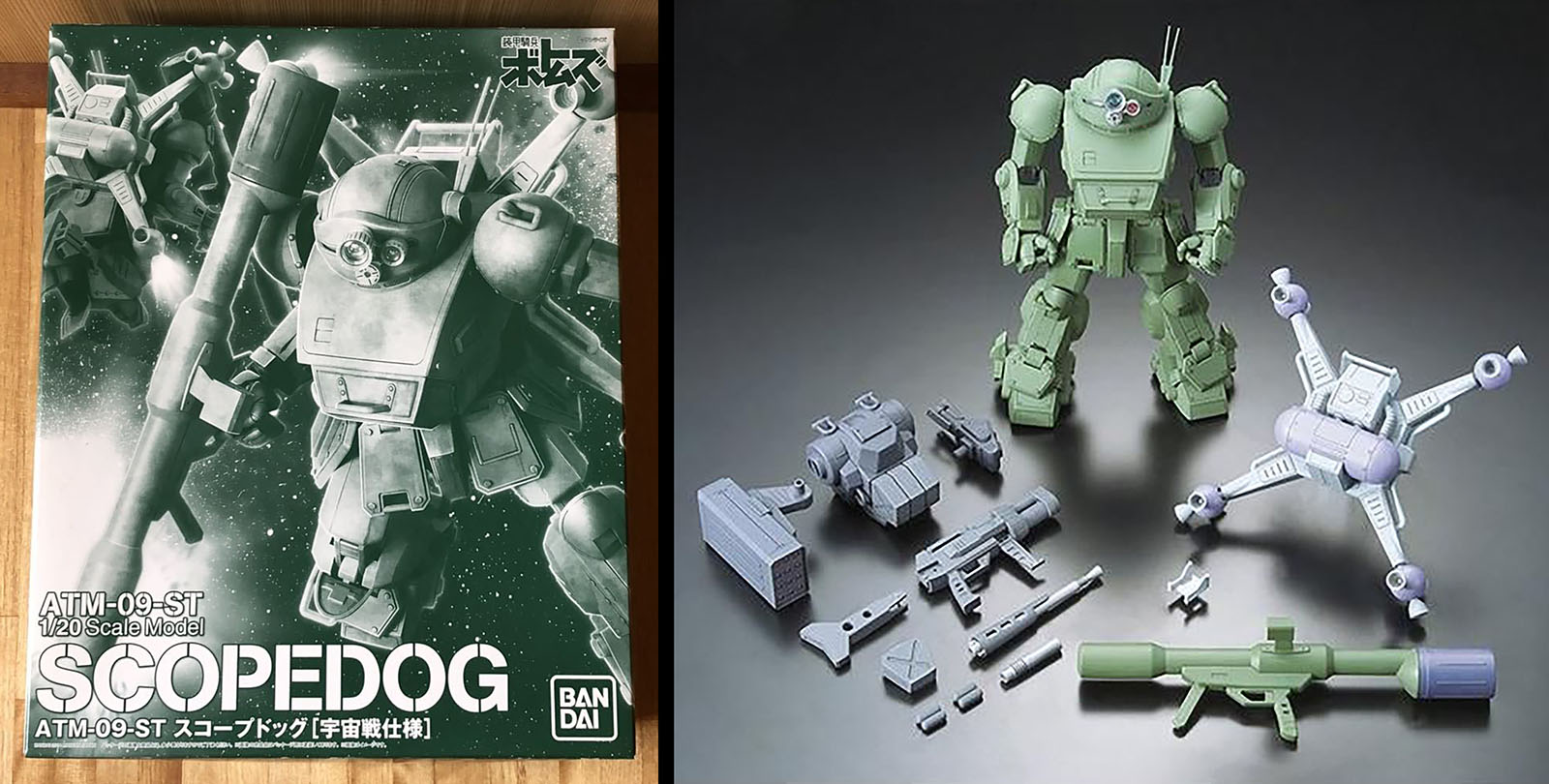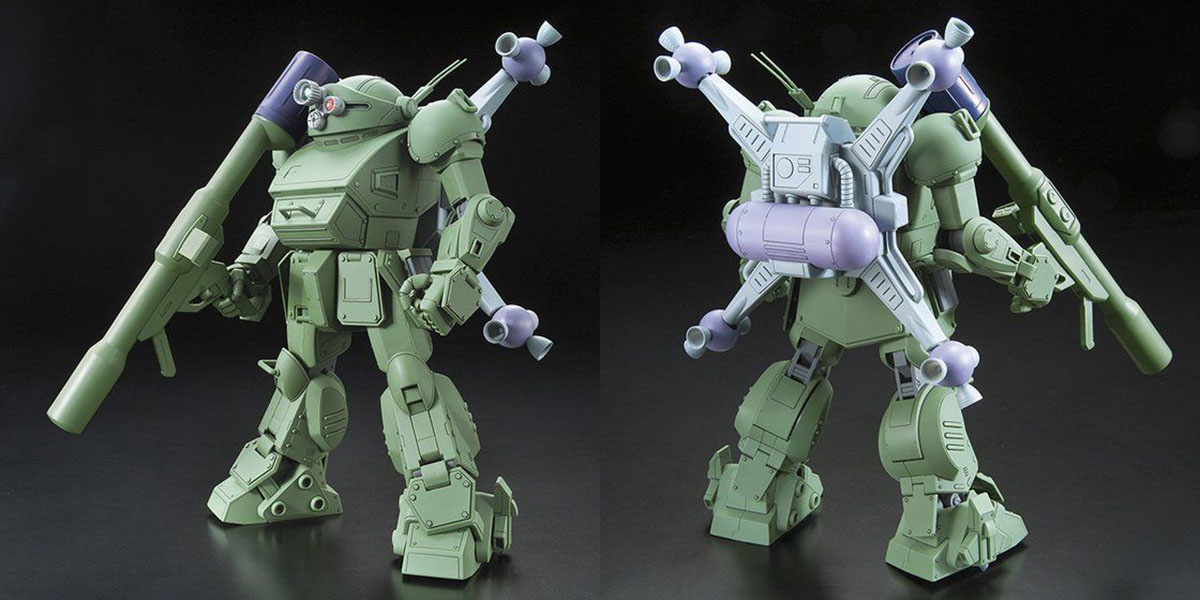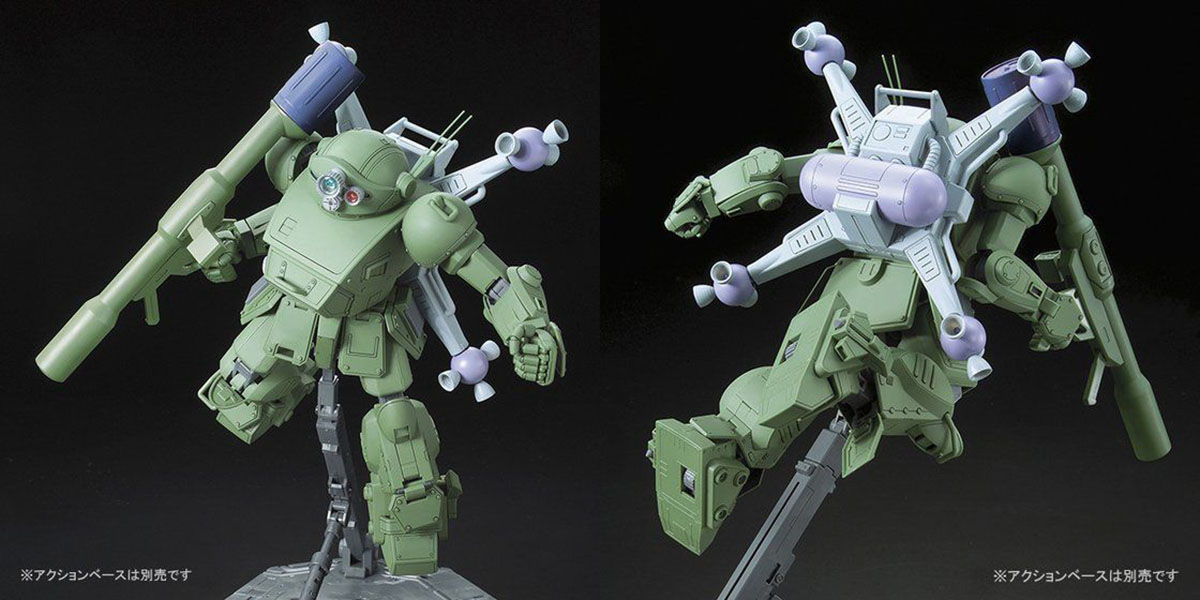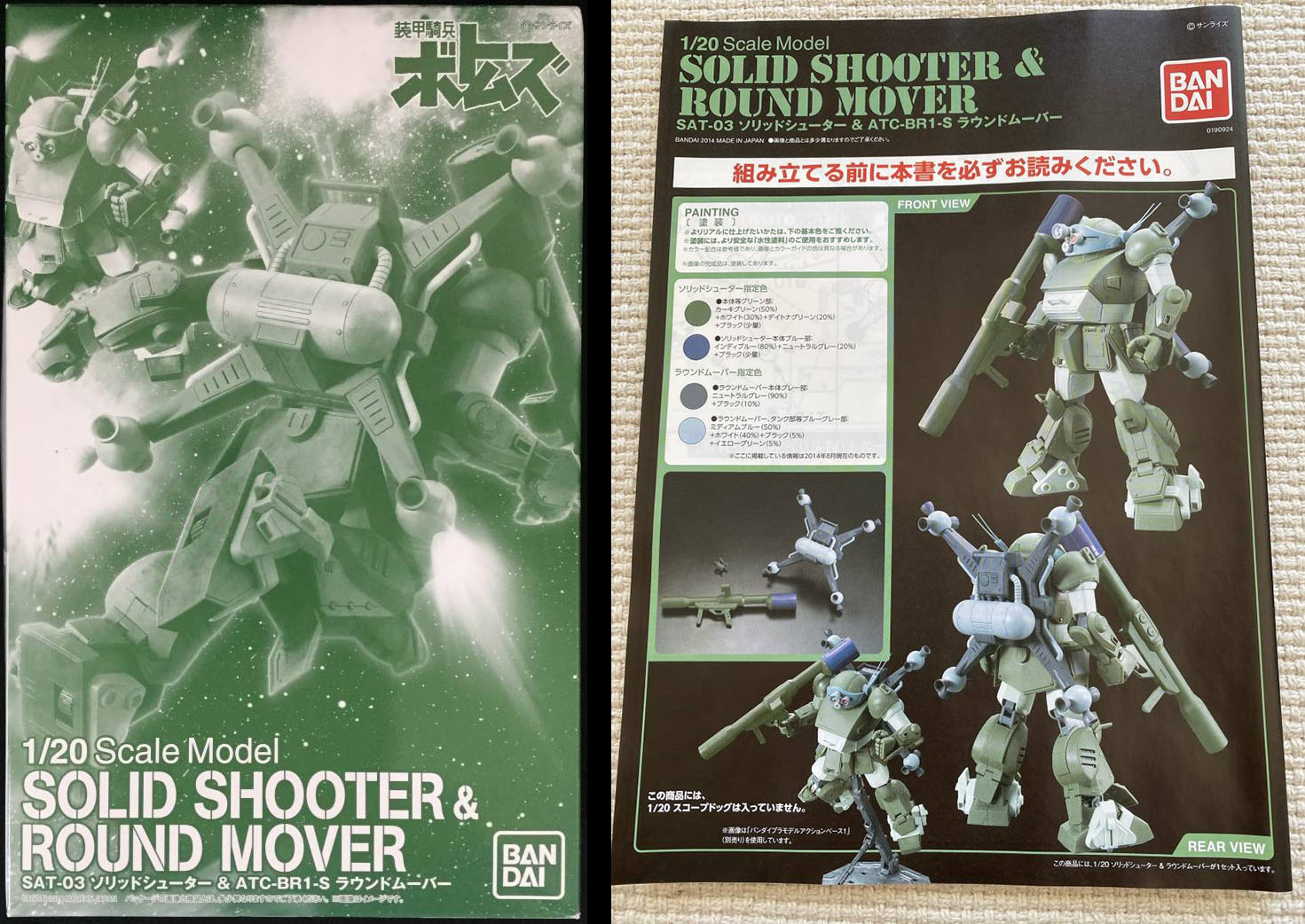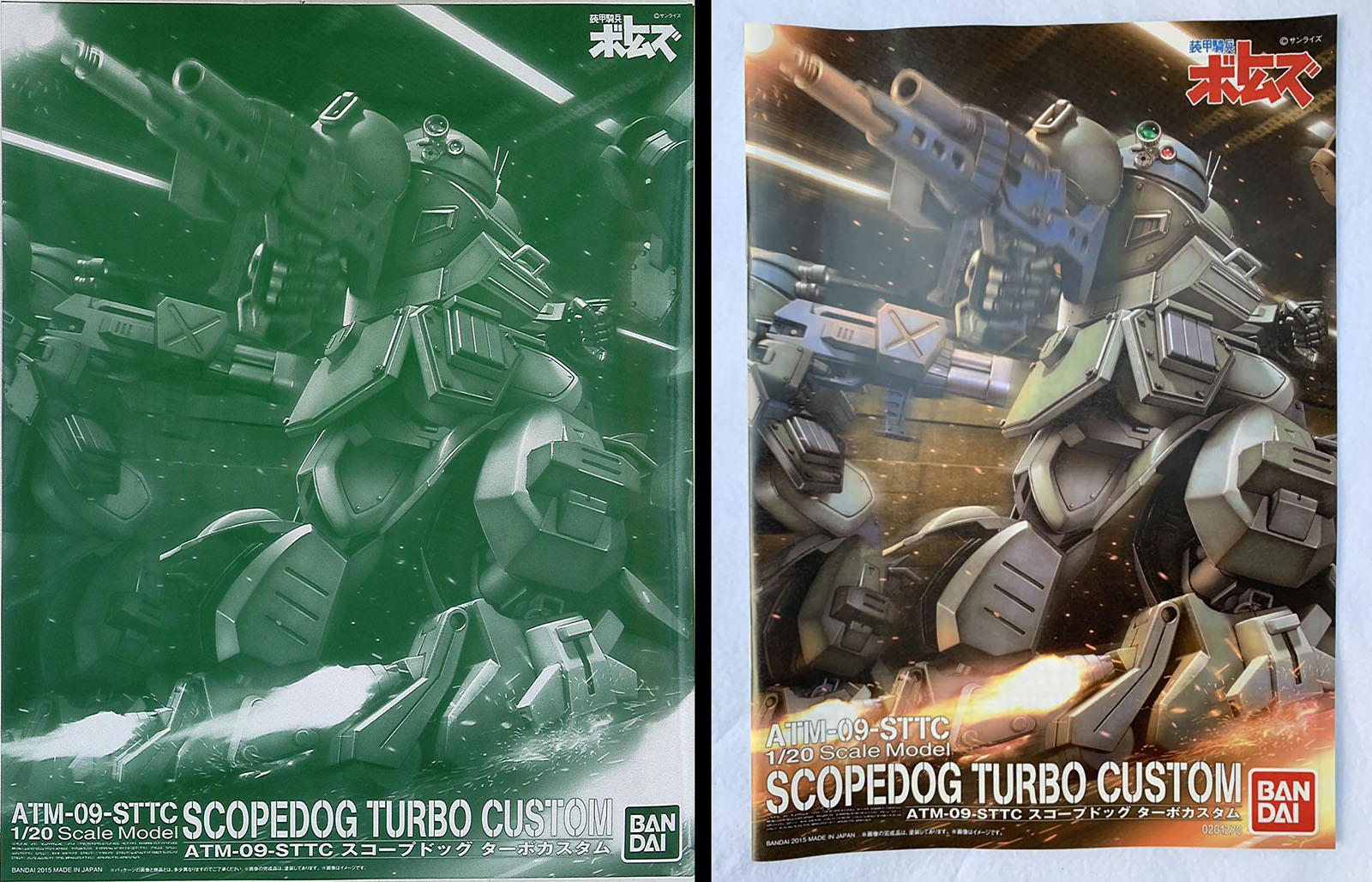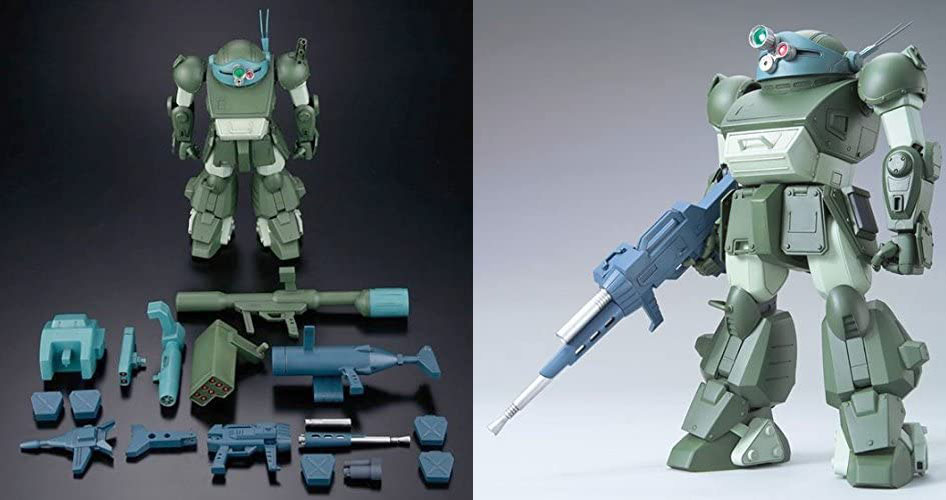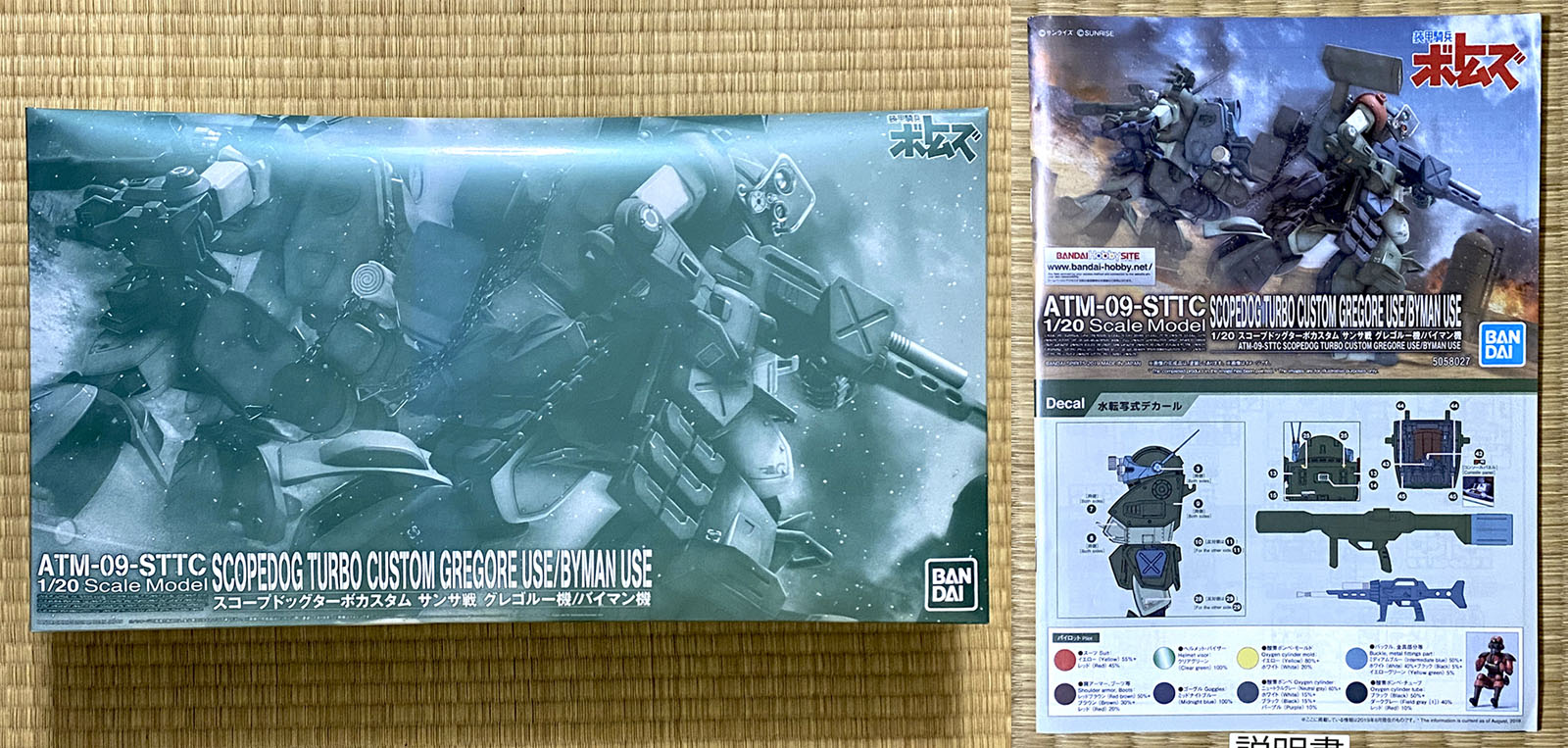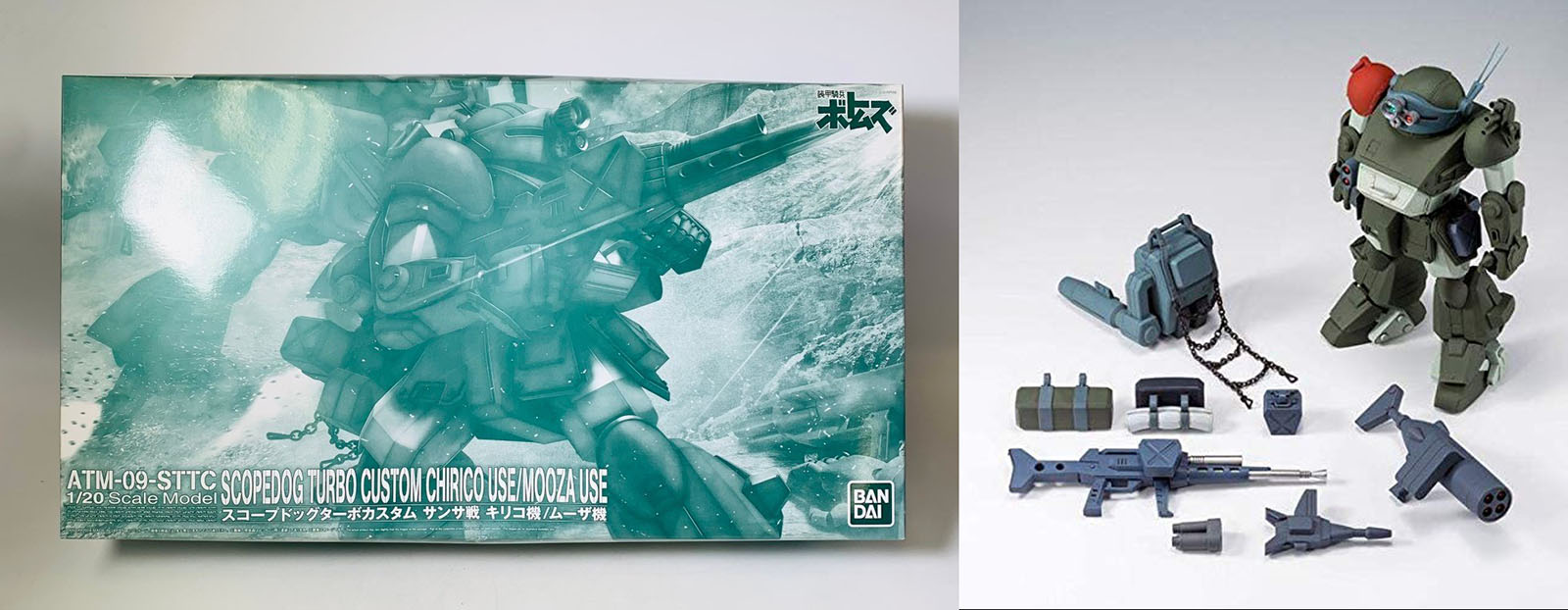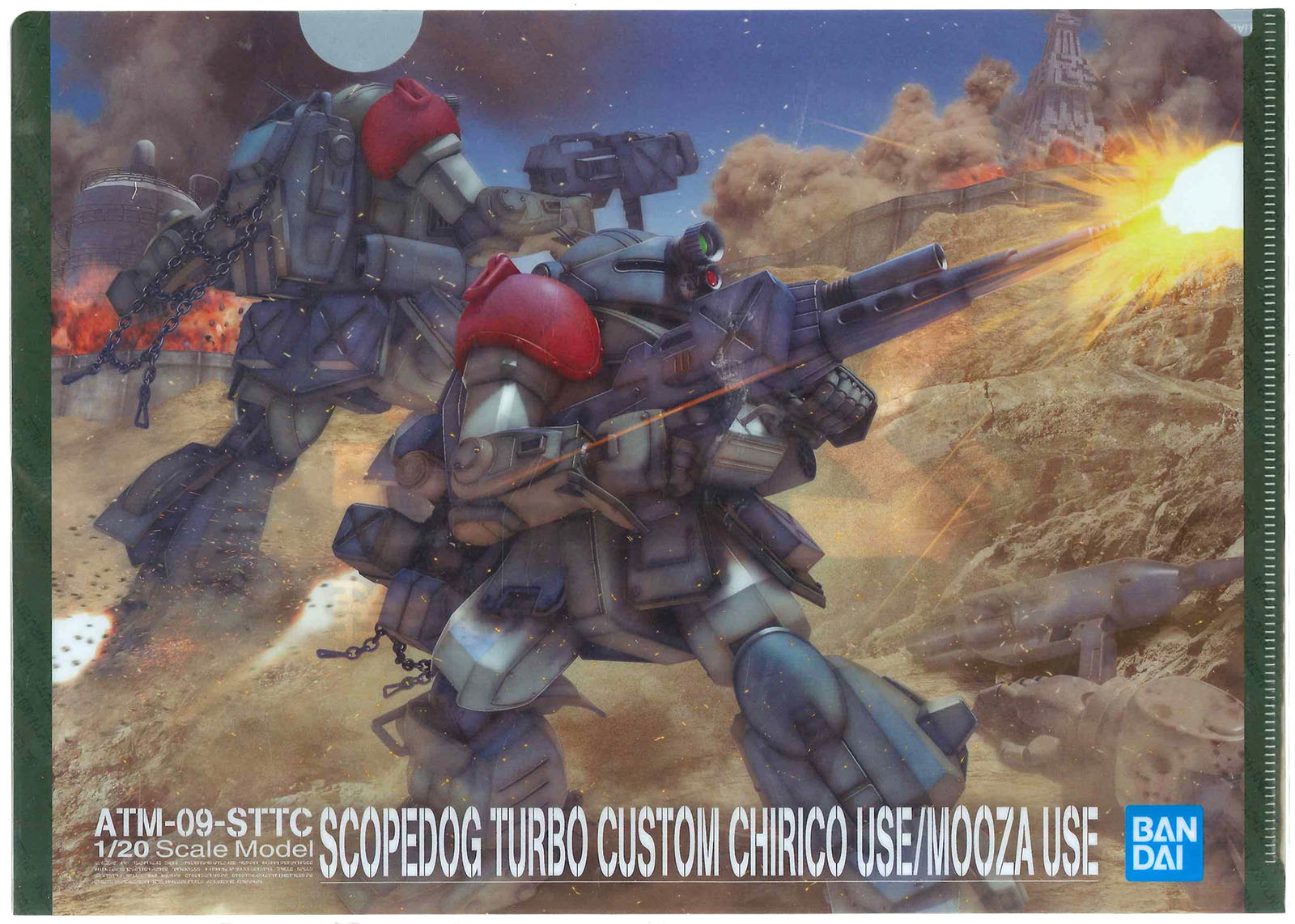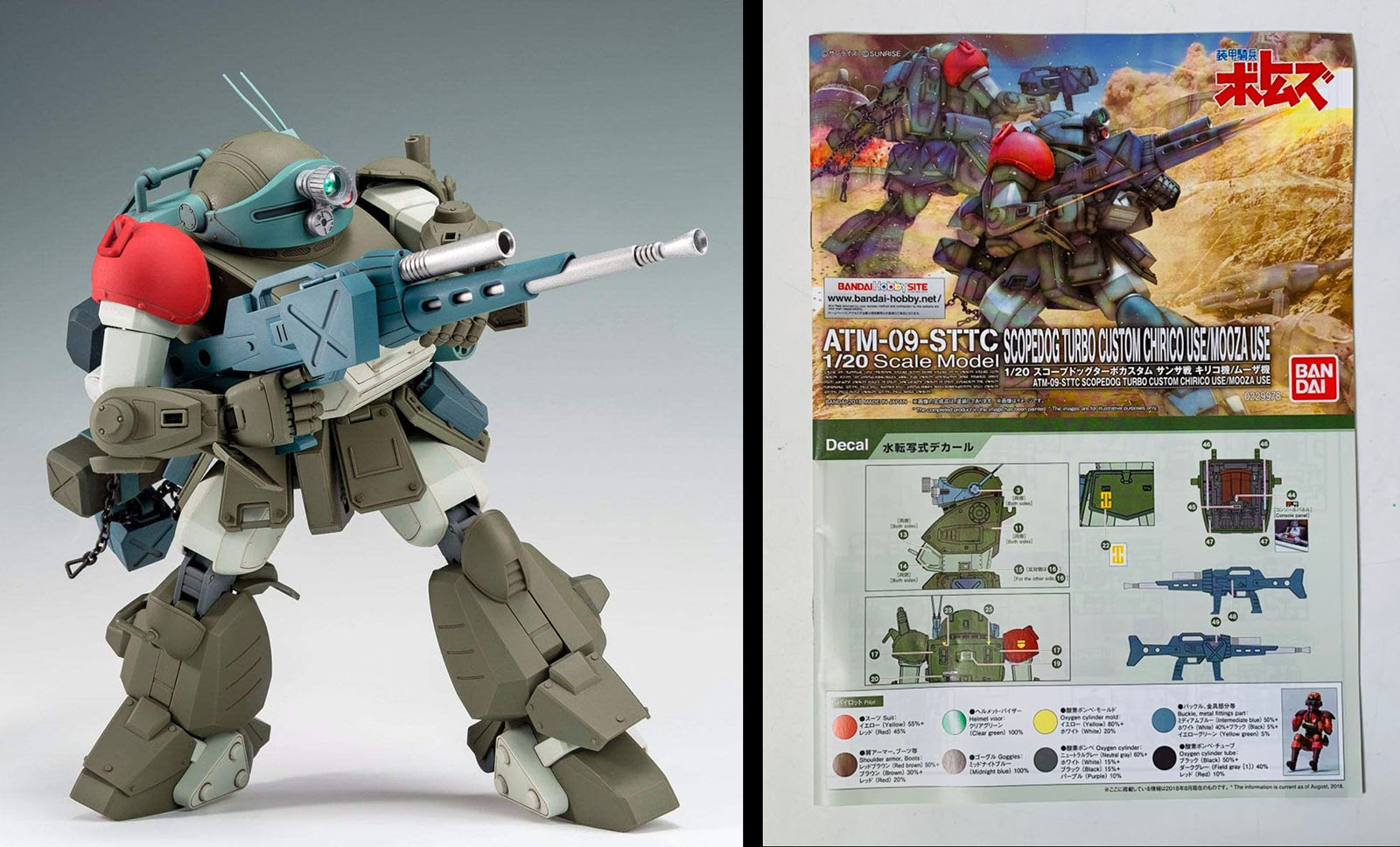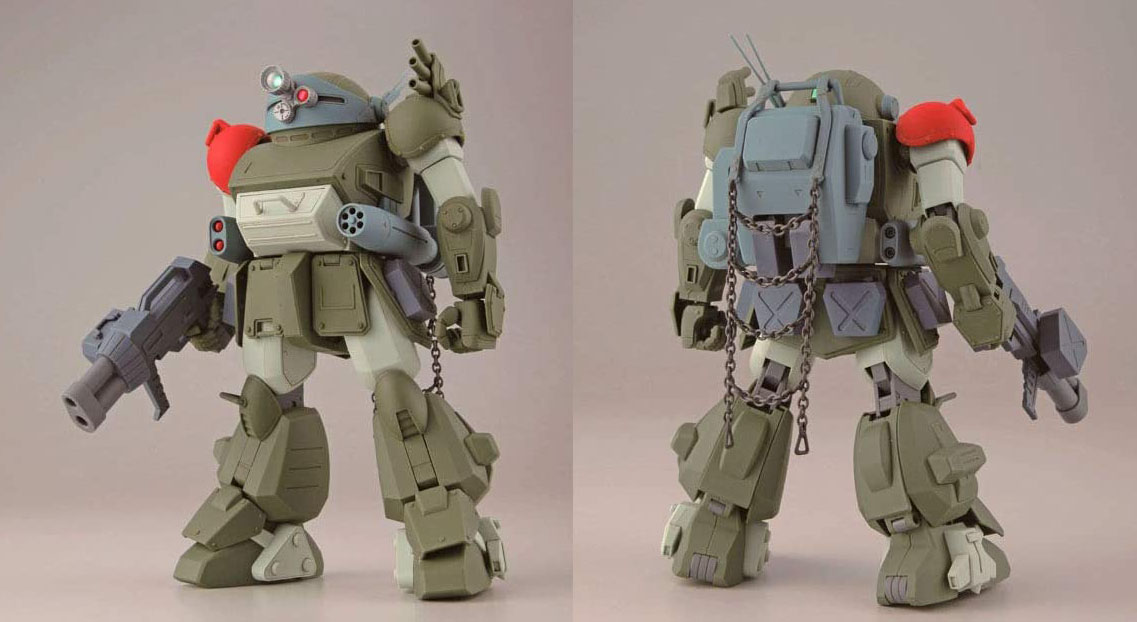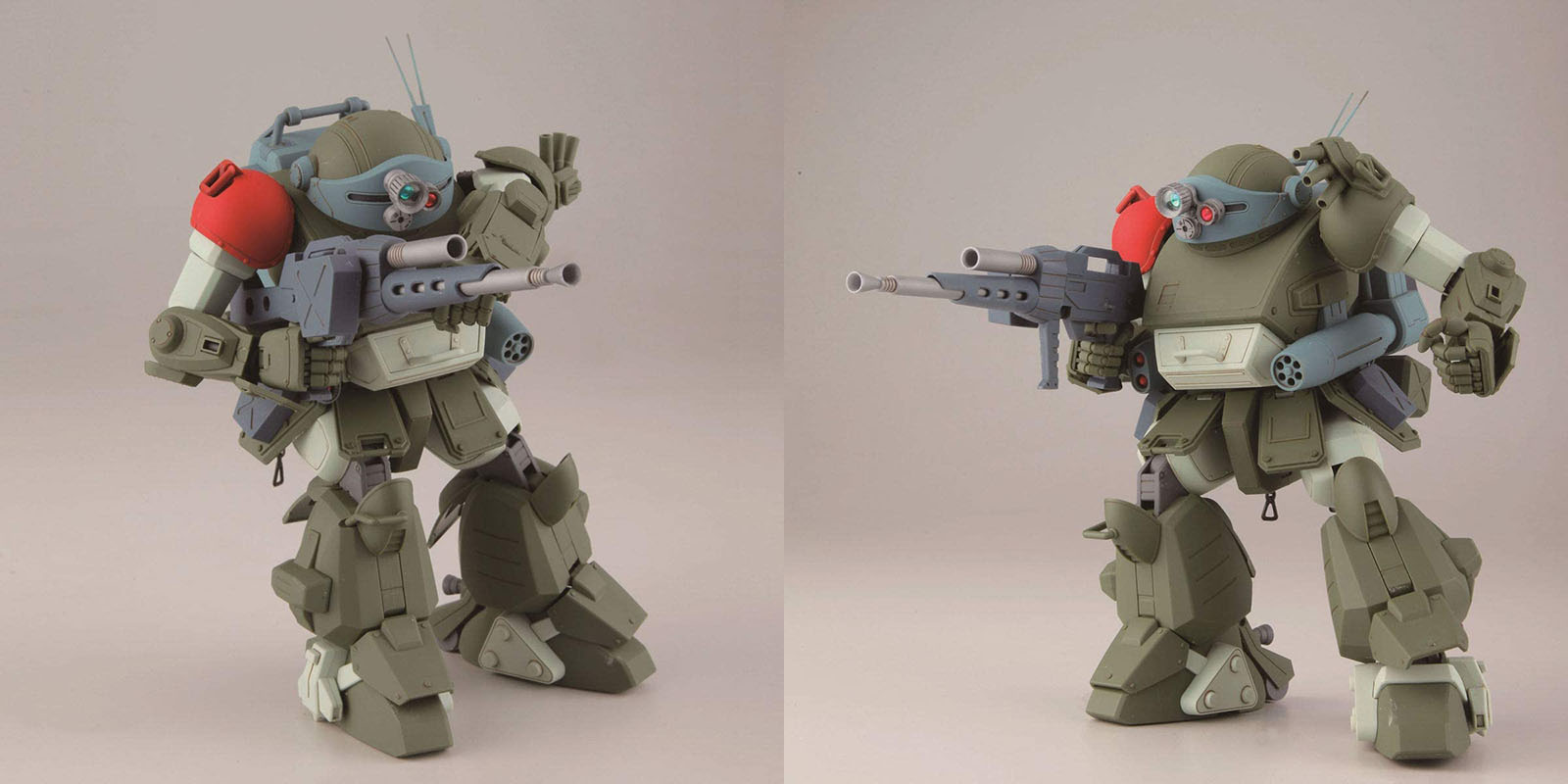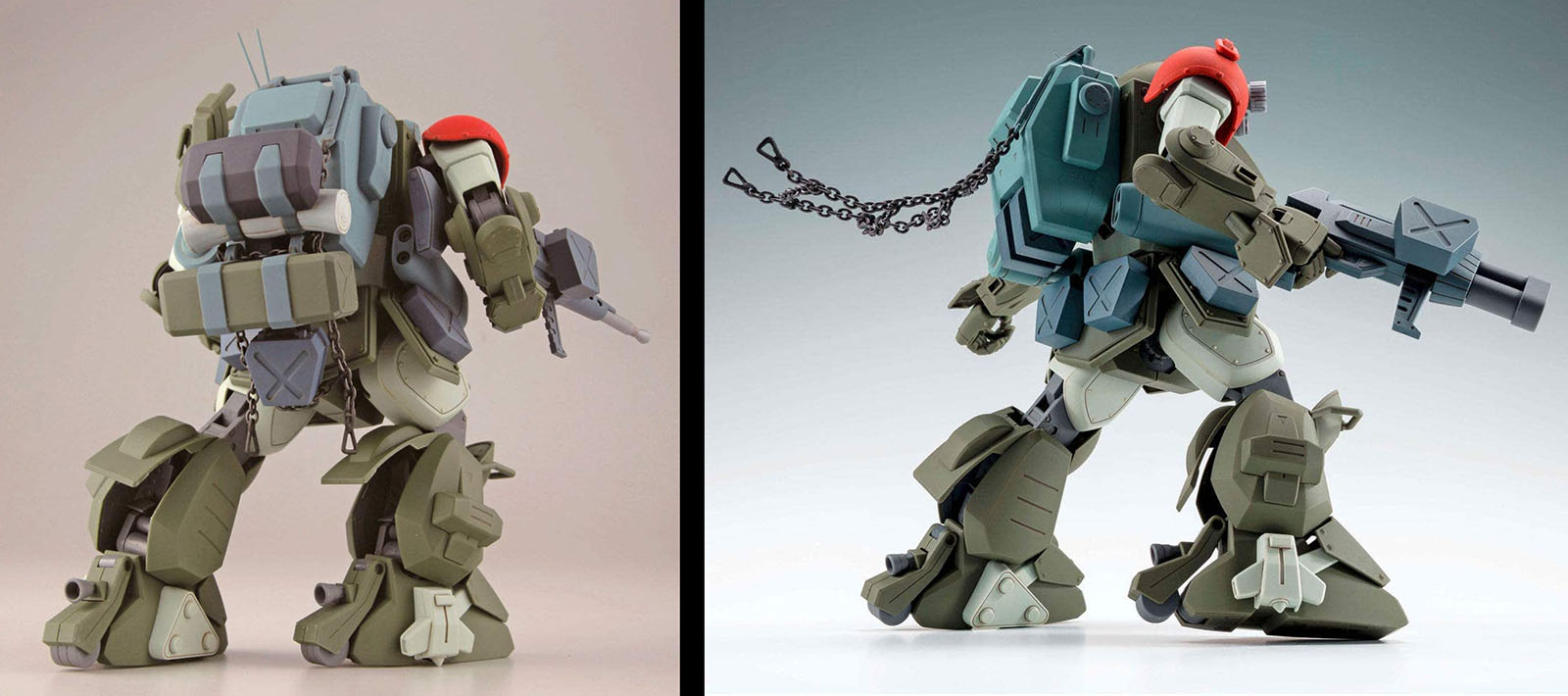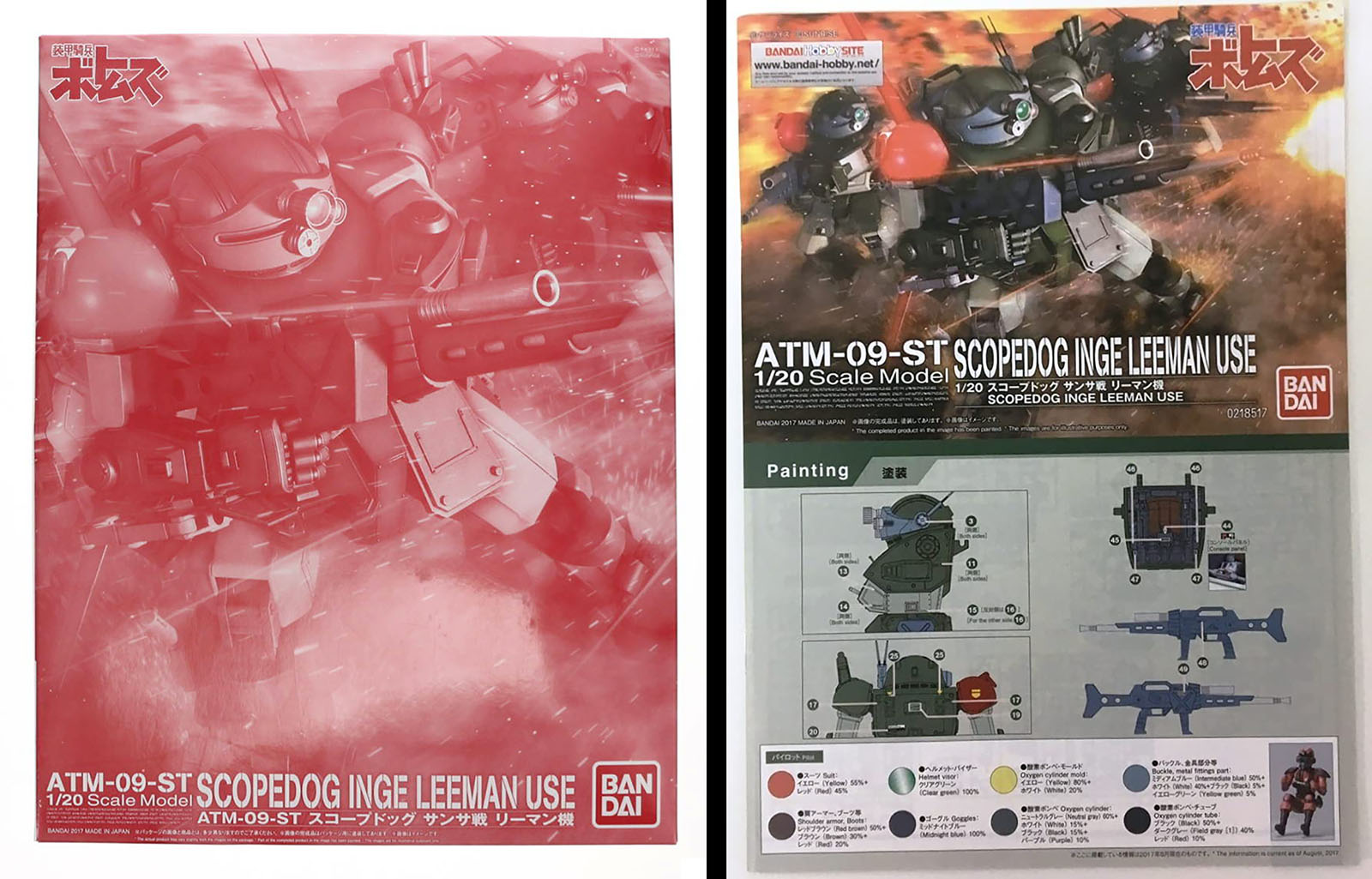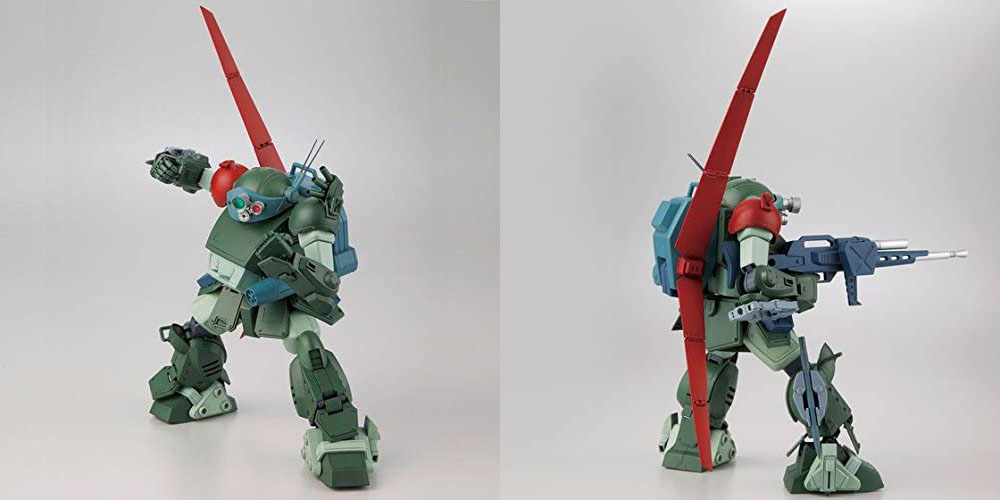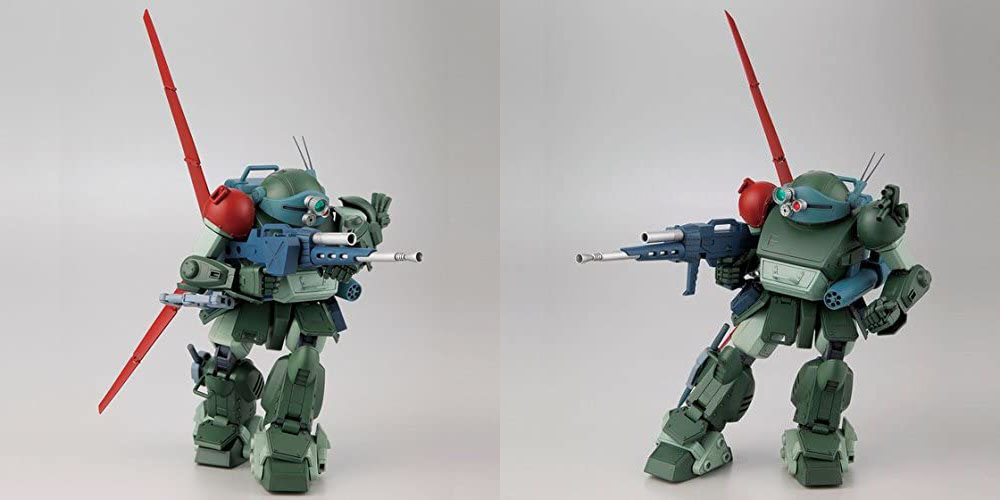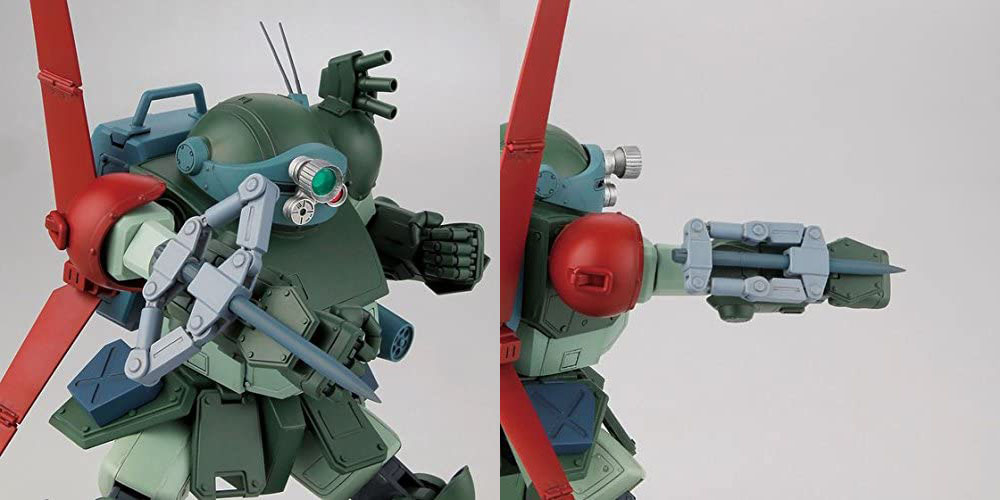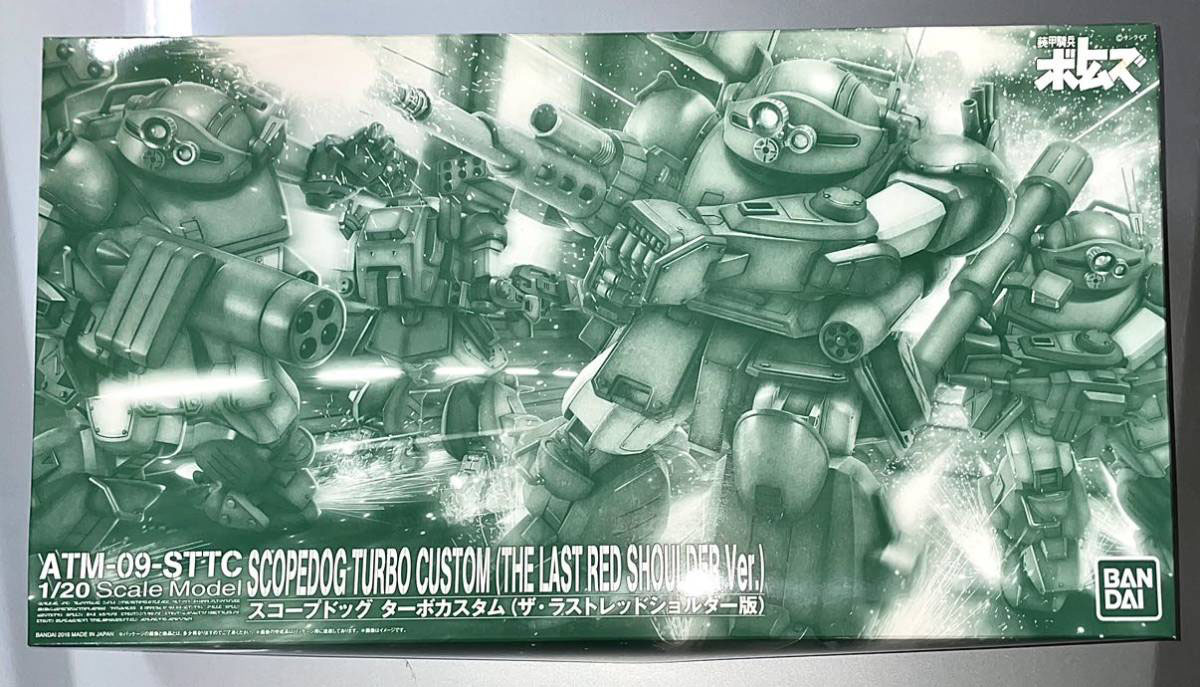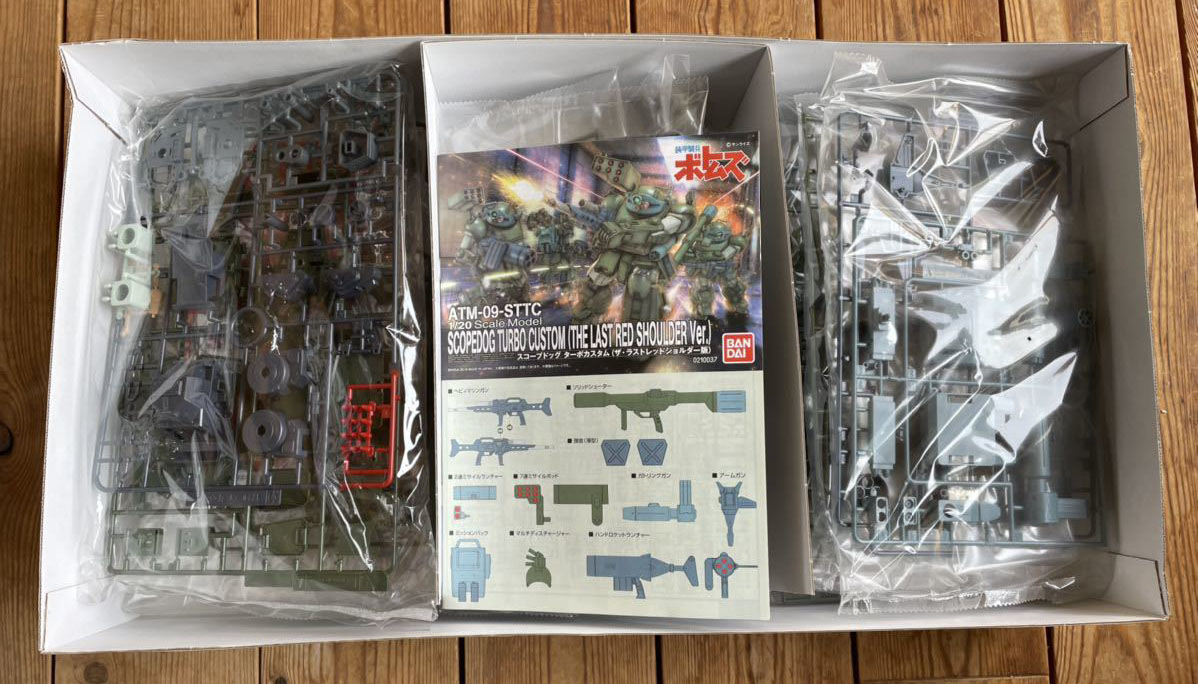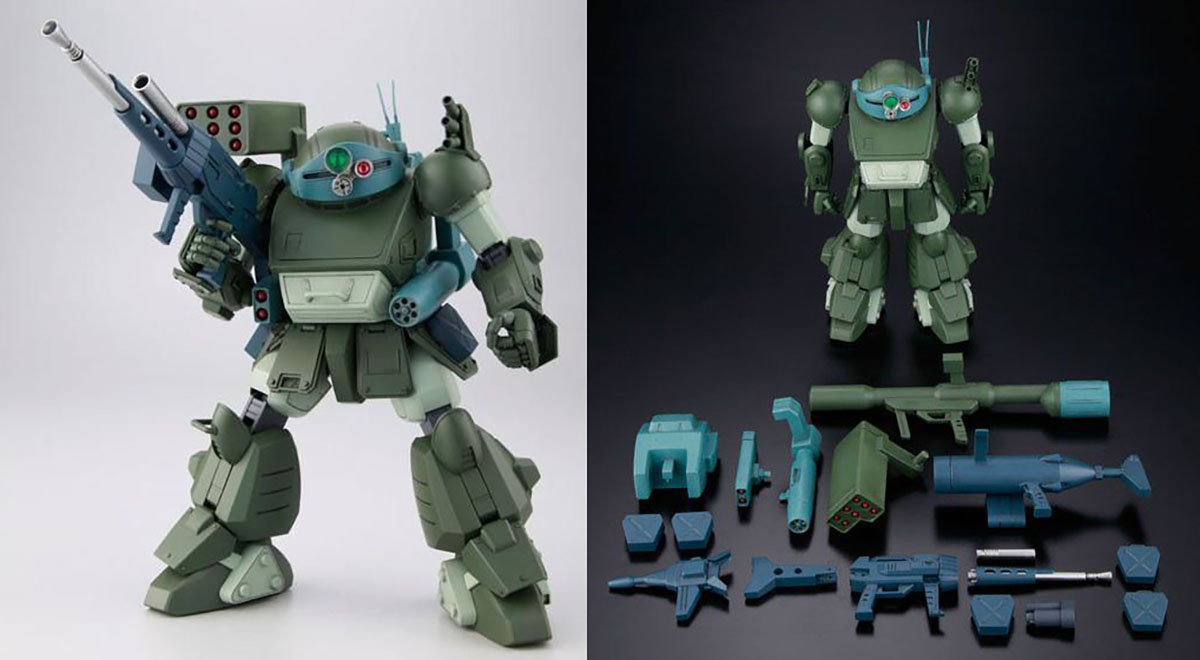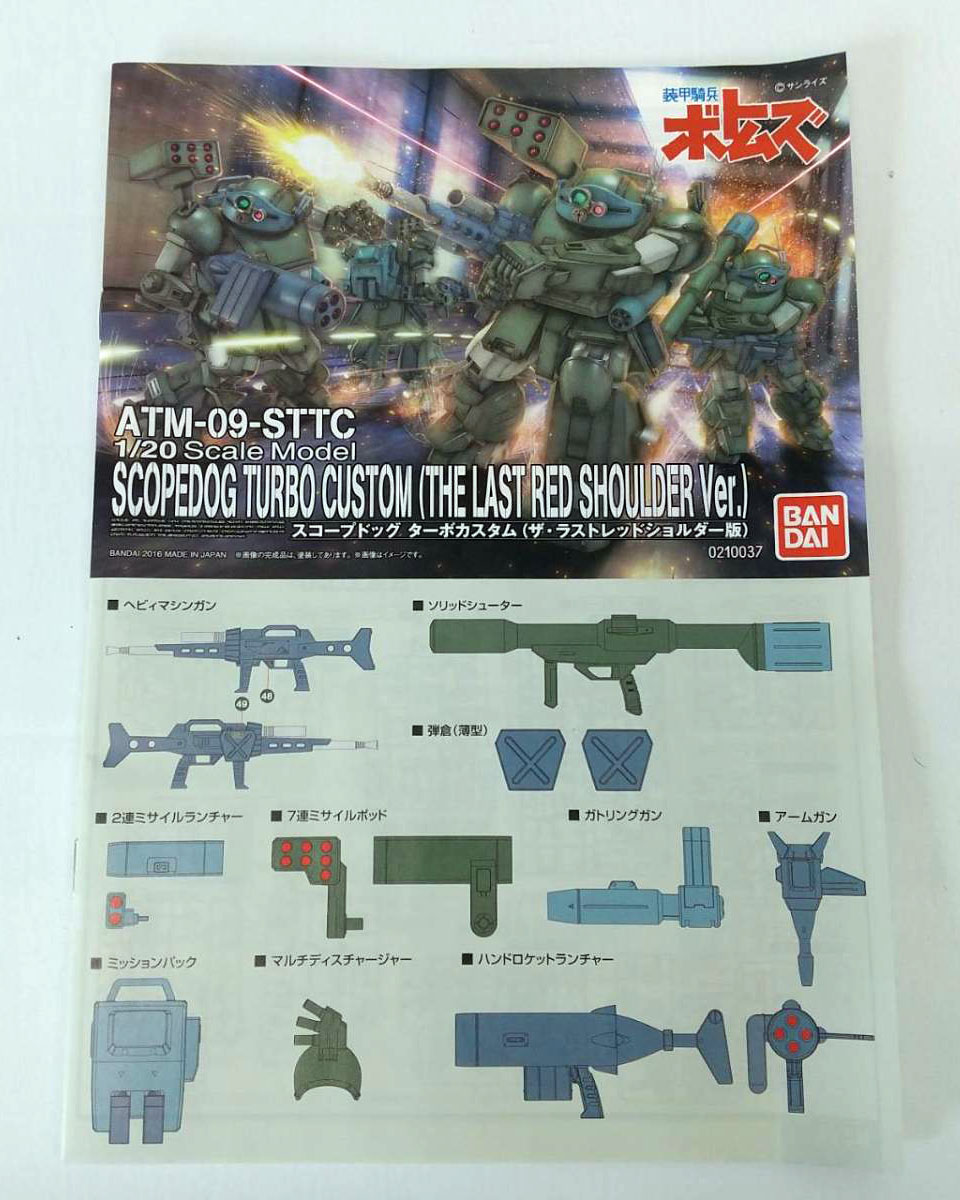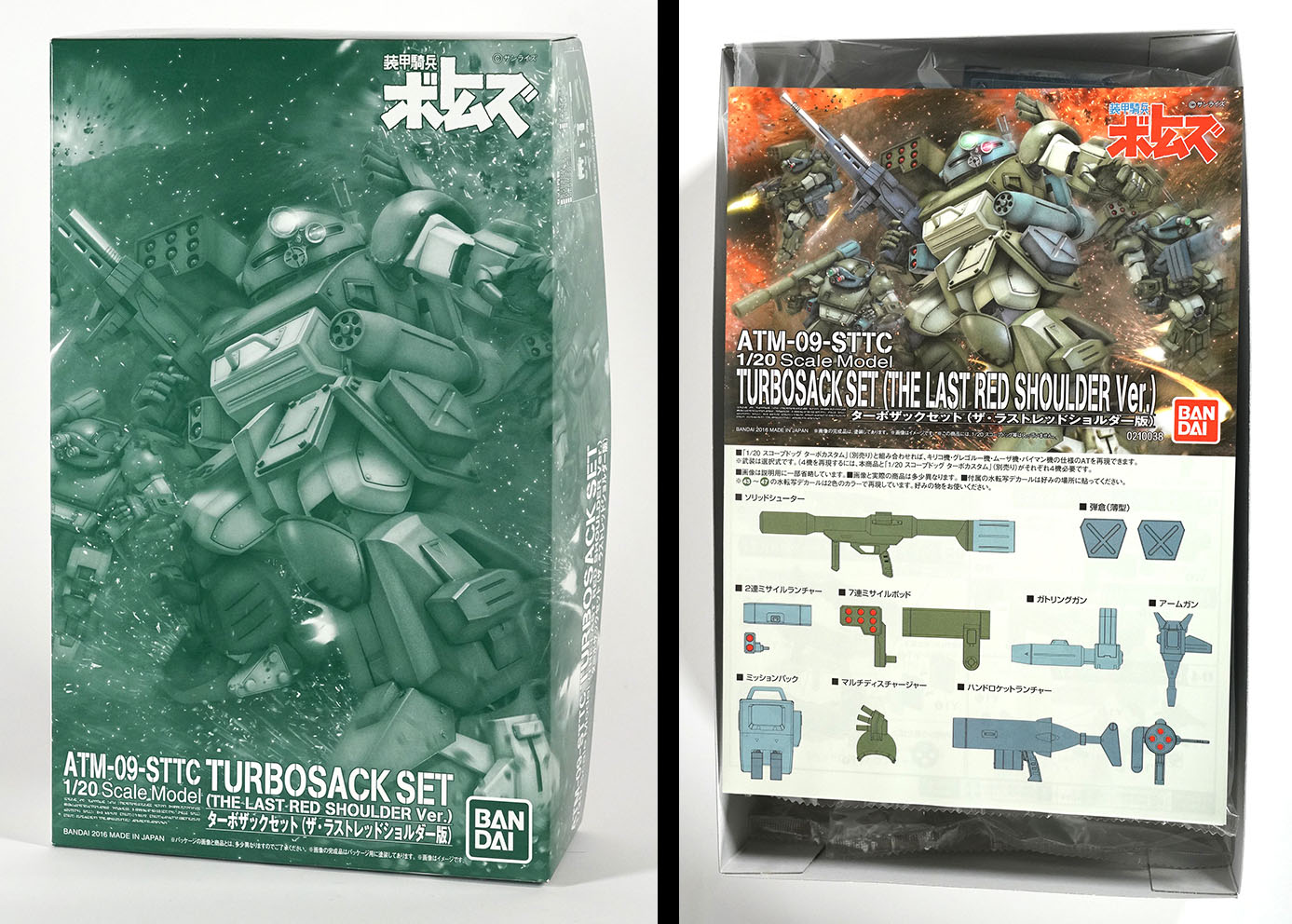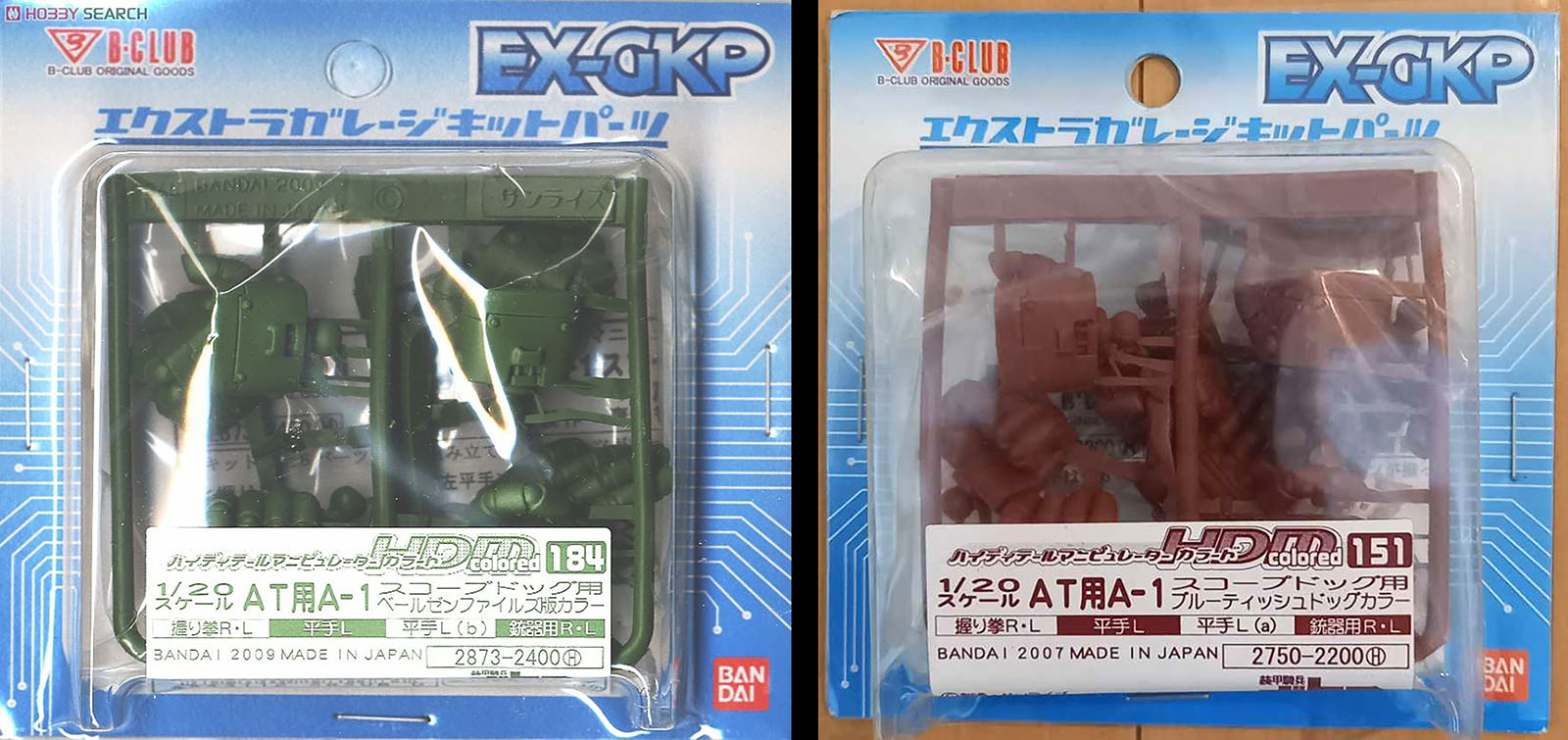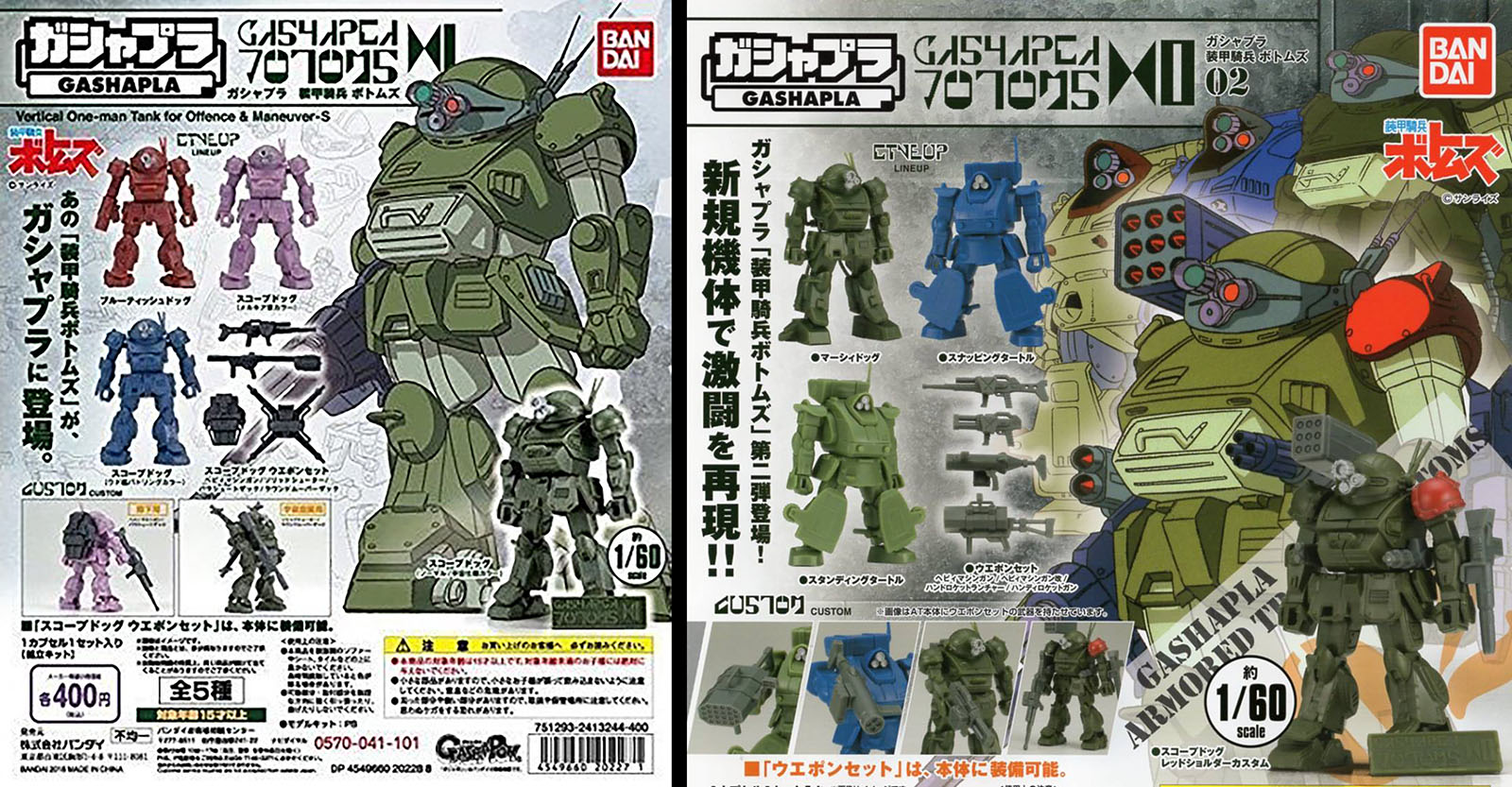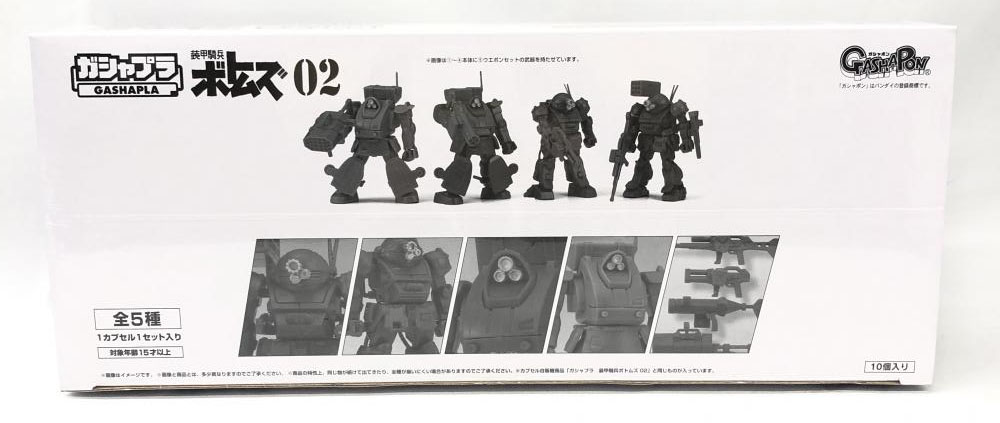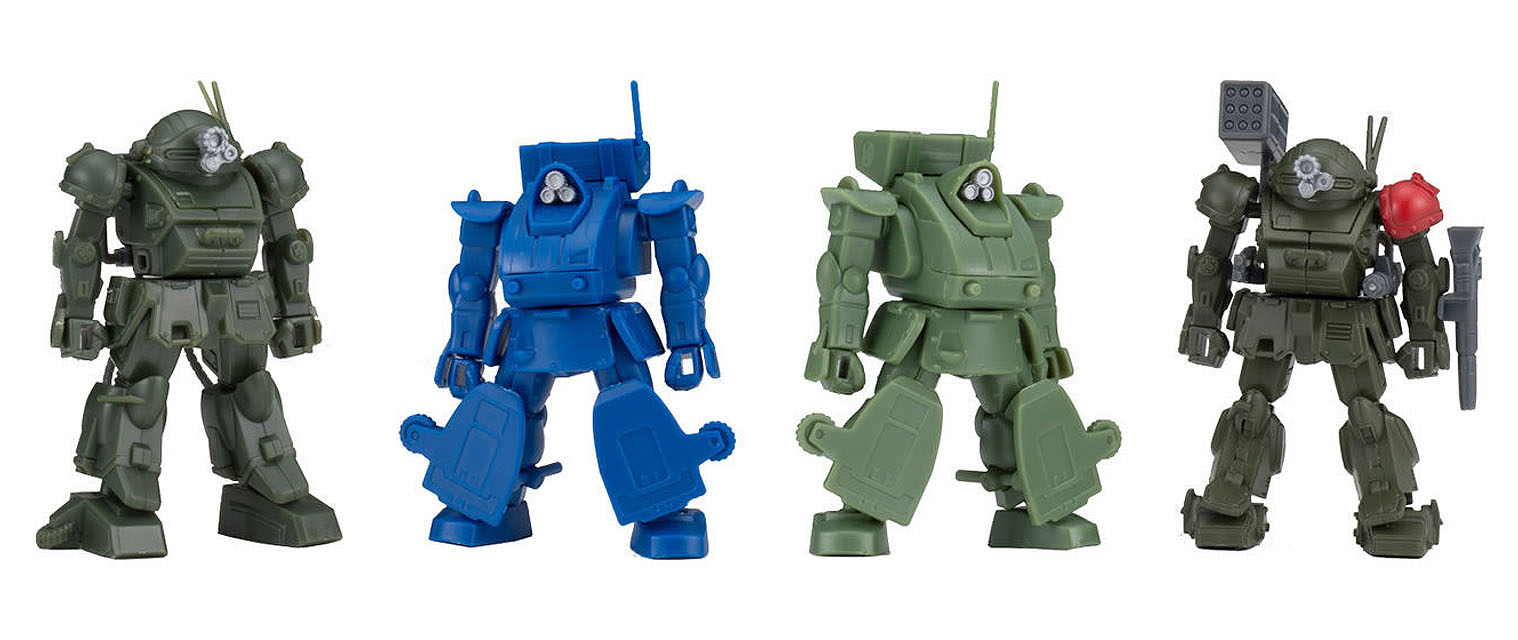Bandai model kits, 2007-2008
To understand what a big deal it was for Bandai to get involved with Armored Trooper Votoms, it’s necessary to know some anime geneology.
Back in the early 80s, when the SF mecha boom was at its peak, two major companies backed anime production: Bandai and Takara. There were also some minor ones, but if you went looking for merch (mainly model kits), those were the brand names you’d see most often. And they each seemed to have their own star creator; Bandai backed shows by Yoshiyuki Tomino (Gundam, Dunbine, L-Gaim, etc.) and Takara backed shows by Ryosuke Takahashi (Dougram, Votoms, Galient). As the decade progressed, Bandai decisively won the robot plamo wars, thanks in large part to the expanding popularity of Gundam.
This isn’t to say Takara was a flop; they made a lot more than just model kits and they’re still alive and well today as a toy company. Votoms products were a huge hit for them in their prime, but Votoms wasn’t a non-stop franchise like Gundam was, so the products naturally dropped into the “second tier” with occasional revivals. Garage kit makers picked up where Takara left off, and the one that eventually rose to the top of the ranks was Wave. In the late 90s, Wave teamed up with Takara to create some new plamo. (Read a firsthand account here.) This proved successful enough for Wave to become the primary source for Votoms models, and a whole new lineup would follow in the 00s.
The key point here is that Wave only produced models in the same scales that Takara had established: 1/35 and 1/24. Put a pin in those numbers and keep reading.
Of course, the other major player in Votoms production was the anime studio Sunrise. When they were called “Nippon Sunrise” in the 80s, they accepted sponsorship from both Bandai and Takara to actually make all the shows listed above. That continued all the way to 1994, when they were acquired by Bandai. This made Votoms a tricky property; Bandai now owned the anime rights, but Takara (a competitor) still had the merch rights. For a long time, it looked like Shining Heresy (1994) was going to be the last word. But it wouldn’t be that way forever.
In the mid 00s, a new Votoms anime went into production, a series titled The Pailsen Files to be released on home video in 2007. Takara and Wave had nothing to do with it; this was the first Votoms series sponsored by Bandai. The video branch (Bandai Visual) would release the DVDs and the plamo branch (Bandai Hobby) would make model kits. In order to avoid conflict with Takara and Wave, they settled on a new scale: 1/20.
This fit into a niche Takara hadn’t claimed yet; they made 1/24 toys and model kits and 1/18 toys (the Dual Model Zwei line), but 1/20 was a new frontier. By this time, thanks again to the constant pressures of Gundam, Bandai had the most sophisticated engineering in the world when it came to planning, designing, and manufacturing models. As soon as they got involved with Votoms, fans knew they were in for something special. And they were not disappointed.
To start with, the body construction went from the inside out with exterior parts mounted on internal components. This was a reversal of the usual process, where external parts were assembled as hollow shells that attached to each other at the joints. Articulation had more range, and the “downform” mechanism was built in from the start to display the model in standby mode. Another unique feature was a set of snap-in pins for the rivets seen all over the original design. Before, they had simply been molded onto the surface. Now they performed the same function as the rivets themselves. The end product was not only larger than a 1/24 kit, but also more refined.
To further explain what made the 1/20 Scopedog great, there’s no better source than the original mecha designer himself…
“I asked to see a Scopedog made by Bandai Hobby Division”
Bandai 1/20 Scopedog X Kunio Okawara Interview
Published in Hobby Japan No. 458, August 2007 issue
Here is an interview with Kunio Okawara, creator of the Scopedog. To our surprise, Mr. Okawara had requested the release of a Scopedog from Bandai. What is Mr. Okawara’s impression of Bandai’s 1/20 Scopedog?
I think men like its shape a lot
Interviewer: What do you think about Votoms becoming so popular in 2007?
Okawara: As I’ve mentioned many times in Hobby Japan, I wanted to create a work that could perform differently than other works, such as diorama development. I wanted to make a story in which a 4-meter tall robot could appear in a diorama, so that people could enjoy the contrast between the robot and a person. To some extent, I thought it would be popular among everyone, and be supported for a long time. I didn’t expect it to be popular for more than 20 years, though. (Laughs)
I think the Scopedog has a high degree of perfection as a three-dimensional figure and is an attractive character. I think men like its shape a lot. There were many other character robots with cool silhouettes in other animation works broadcast at that time. The TV series was criticized at the beginning, but I still thought it was attractive as a three-dimensional object. Now I feel that I was not mistaken.
Interviewer: In fact, there are only a limited number of works from more than 20 years ago that still remain in people’s minds.
Okawara: That’s true. In my case, Gatchaman, Yatterman, Gundam, Votoms, and so on. I was lucky to be blessed with works that have remained in people’s minds. Gundam is extraordinary. It has been going on for a long time. Votoms, on the other hand, is a work that makes you want to see it again. It’s similar to the feeling of wanting to eat Japanese food after eating a lot of foreign food. (Laughs) It’s a work that you want to see again when you think it’s gone. And when I see Votoms, I want to develop it further.
You have to like the Scopedog to make it
Interviewer: What do you think about the fact that the Scopedog is still popular today?
Okawara: This was not a calculation. I think that when someone like me, who has loved making things since I was a child, thinks about and draws things they like, people naturally support and follow them. This is often the case in the art of making things. It makes me very happy to see many products still on the market after more than 20 years, and to feel that there are people in the development team who like them.
Interviewer: Various Scopedog products have been released by various companies. What do you think about their shapes?
Okawara: It doesn’t matter who makes it. I feel that there is no big difference between Scopedogs made by anyone. Of course, it’s a 2D concept being turned into a 3D object, so the interpretation will be different depending on the developer and staff involved. However when a Scopedog is created by people who like it, I don’t see anything other than a Scopedog there.
Interviewer: There are people who like Votoms and the Scopedog no matter which maker or publisher it comes from.
Okawara: You have to like the Scopedog to make it. (Laughs) It’s not what you might call “cool.”
Interviewer: What do you think about Takara’s 1/24 model?
Okawara: I love the silhouette. The waist is a little big. Compared to the original design, the chest and waist are wider. But overall, I like the silhouette a lot. Anime [production] at that time was very generous, and things were drawn from three [isometric] views, like blueprints. That’s how I drew it. But drawing it from three views that way is not the same as drawing it in a pass, so the blueprint and the model sheets are different. [Translator’s note: “pass” in this context refers to an action pose.] But if I knew it was going to last for more than 20 years, it would have been better to be consistent and draw more precisely. (Laughs)
I wanted Bandai to make it in order to further develop Votoms
Interviewer: What do you think about Bandai Hobby division’s decision to release a Scopedog model kit?
Okawara: I had high expectations for what would happen if they made a Scopedog using the technology they cultivated for over 20 years with Gundam. Thanks to negotiation by Mr. Tsukada, the producer of Pailsen Files, and Mr. Shibuya of Sunrise, everyone was able to create a product without any problems. Their efforts are amazing.
As for me, since Takara-Tomy doesn’t currently have a plamodel division, I’m very happy to be able to work with them. I wanted Bandai to create a new product in order to further develop Votoms in the future. I knew there were Votoms fans at Bandai. I always wanted to have Bandai create something that would represent the two extremes: the cool robot world of Gundam and the complete hobby life of the Scopedog.
For me, Votoms is one of my masterpieces. Thirteen years ago, Sunrise joined the Bandai Group. I wanted Bandai to handle and develop Votoms. I received information from Mr. Tsukada when he was working on the Pailsen Files project. I was really interested in seeing a Scopedog from the Bandai Hobby Division. I’m very happy that this has been achieved. I’m very much looking forward to seeing what Bandai has in store for us in the future.
The know-how cultivated with Gundam is being put to good use
Interviewer: So here is the completed kit. We’ve tried various things, but please take a look at the chest runner.
Okawara: This is a new interpretation. This is a part that Kouichi Inoue’s team is focusing on in their “Scopedog 21C” project. [Translator’s note: a project undertaken by Sunrise to reverse-engineer the Scopedog design for a definitive 3D representation.] It’s amazing that they were able to produce this. Multiple slide molds are commonplace now, but it’s amazing how far you can take it.
I had the opportunity to visit Bandai’s Shizuoka factory when multicolor molding was just starting. Since that time, technology has advanced beyond compare. This technology is hard to imitate. They learned it while doing business with Gundam. I feel that the know-how cultivated by Gundam is being put to good use here as well.
I’d like to make the chest frame out of metal. It would be really fun to make on my own. There are old bike kits where the chain is connected with metal. I was fascinated by that at the time. I want to have that kind of fun. [Translator’s note: in addition to designing mecha, Okawara is also a metalsmith who makes his own 3D art objects.]
Interviewer: The next interesting feature is the “bolt-on snap.” Some of the armor plates are affixed with pins.
Okawara: This is amazing. The design technique of perfectly matching the armor plates and frames with bolts is amazing. It’s a lot of fun to put them together. It’s like building a scale model. It makes you wonder if the real thing exists somewhere.
Interviewer: The frame already looks cool, doesn’t it?
Okawara: I agree. I like the metallic color of the frame. It’s like black iron. I think it’s okay to change the color there. Nowadays, there are a lot of metal paints and such. I think it would be good for the modeler to reproduce it using them. You can express yourself in a variety of ways because the material is really good these days.
I often search for various materials on the net. There are many things that would be interesting to put into a model, such as micro-screws and ultra-small fluorescent lamps. The net is a heaven for modelers, isn’t it? You can find anything you need. Looking at them, I feel frustrated that I can’t make such cool things, but on the other hand, I also enjoy it. I’d like to try making a Scopedog that makes use of such things.
Interviewer: Also, the pins that are used to hold parts together have a minus mold on the back. It’s arranged so that the extruded pin marks also become details.
Okawara: I like this idea, too. They’re using the pin marks that used to get in the way. It would have been hard to come up with this idea in the past. You can’t tell just by looking at it. It’s something you can’t see unless you build it.
Interviewer: Then there is Bandai’s attempt at a DX kit called the “Metal Spec Version.” [With aluminum bonus parts shown at left.]
Okawara: I think it’s interesting to have Astragius letters and markings as stencils. I’m sure there are some people who will like it. It’s a little different to cover the armor with metal. The turret lens and the aluminum barrel are amazing. It takes a lot of work to cut this taper. I really like the sense of precision that metal can provide.
The metal screws are also nice. I wonder if they can make a whole body out of metal. (Laughs) I’ve been proposing the idea of changing materials for a long time. I’ve suggested making a Scopedog that can be assembled with screws, and won’t break even if handled roughly.
I also thought that if I had the time, I would make it myself. Now, after more than 20 years, I think something close to that has been created. Seeing the kit makes me want to make one myself. (Laughs) A Scopedog made of metal. The 1/1 Scopedog that Mr. Kogoro made is very powerful, but I can’t display it in my house, can I? I’d like a 40-50cm full-body metal Scopedog that I can display in my house.
Interviewer: I’d love to see it! It would have quite a presence. Now, please give a few words to our readers.
Okawara: I think Bandai’s 1/20 Scopedog is a wonderful thing. It’s a great first shot. I really hope it will be a success. If so, it will develop into a series. I’m looking forward to the next one. Votoms is a character and an item that should be pursued for a long time like Gundam. I hope everyone will help take Votoms one step further.
Interviewer: Thank you very much.
(At Office K, one day in May)
The Models
Promotional clear file
Addendum

